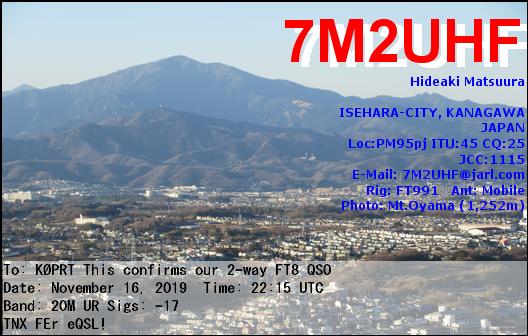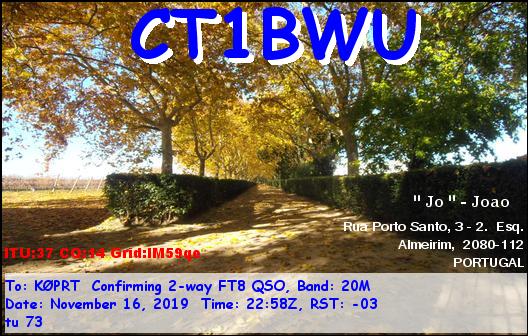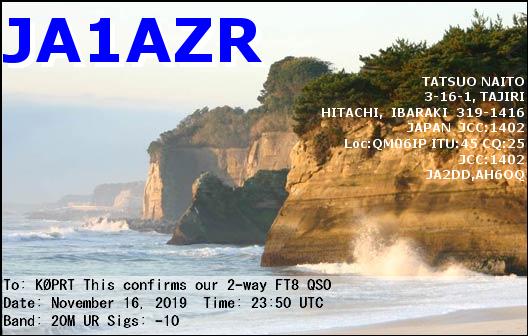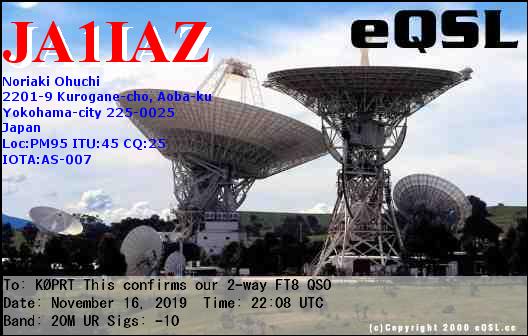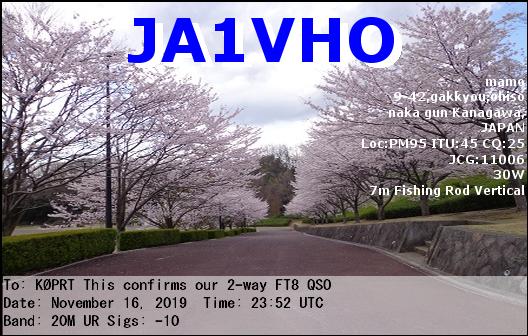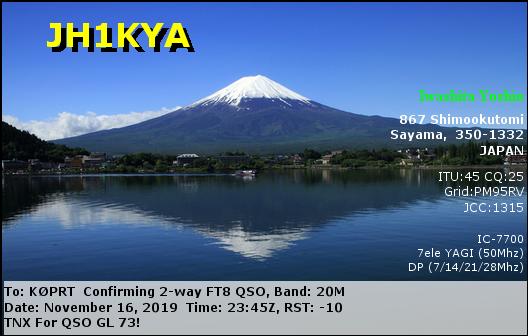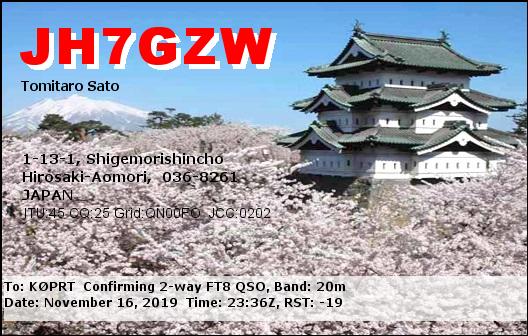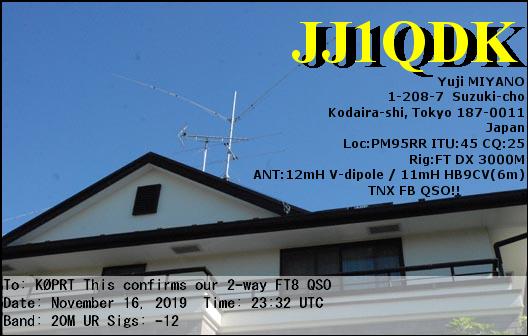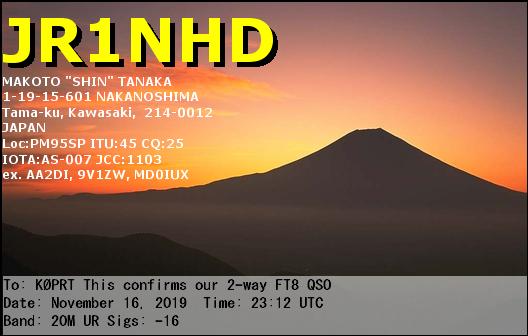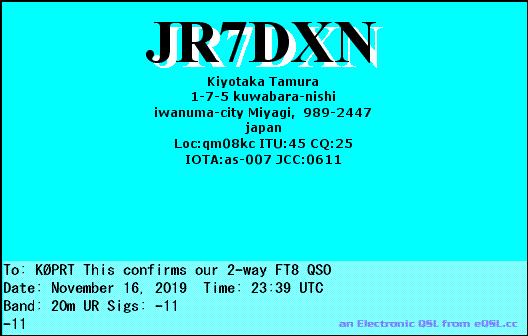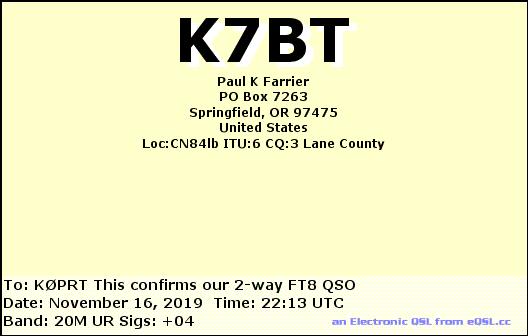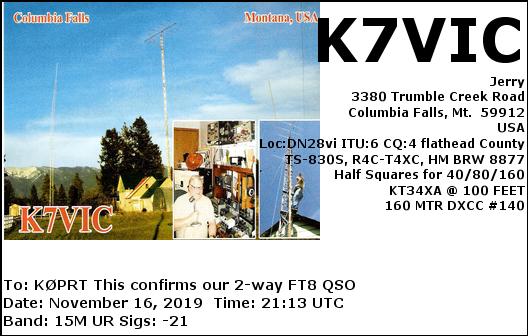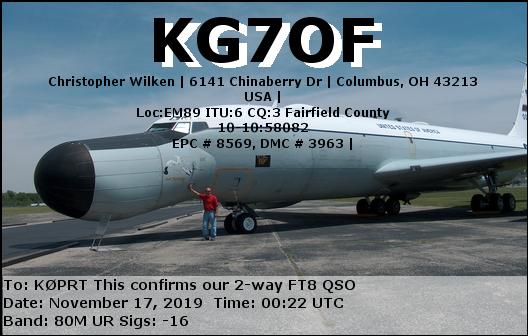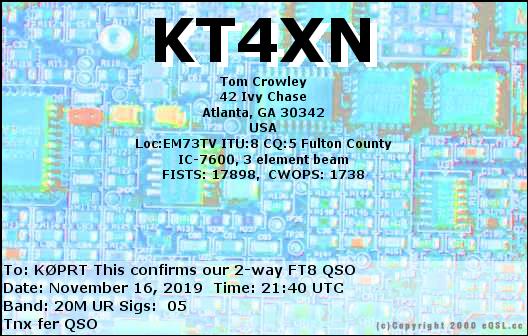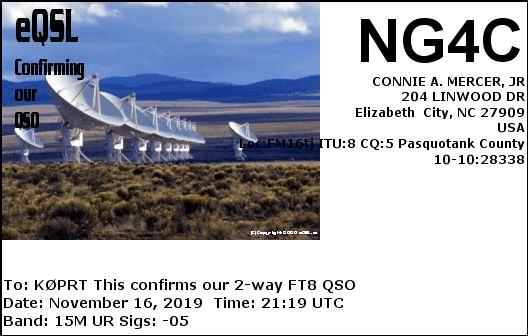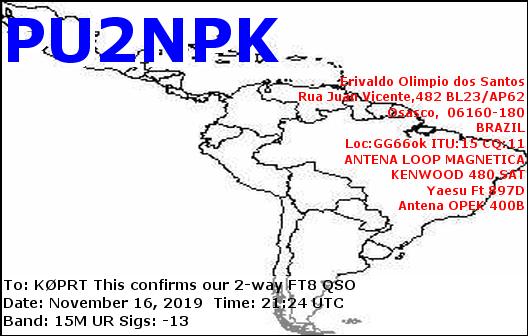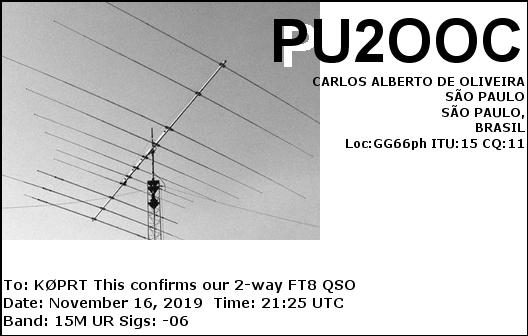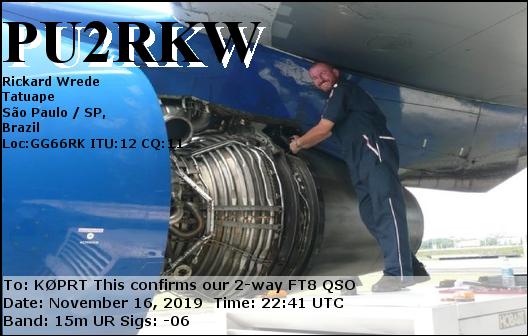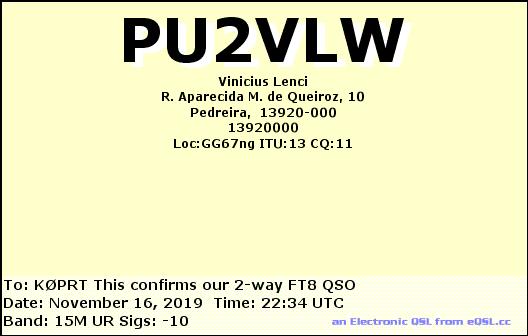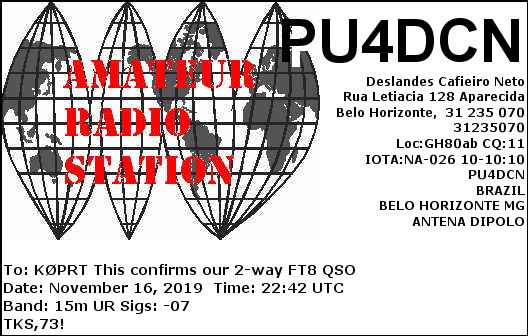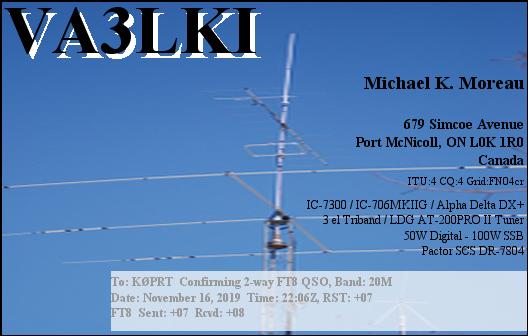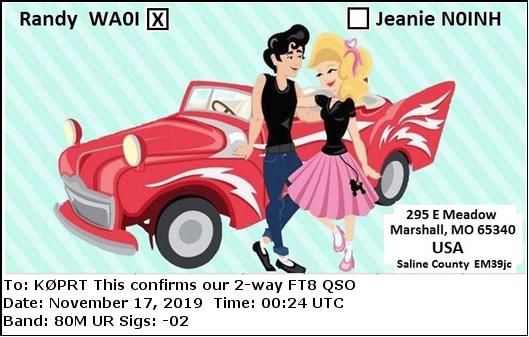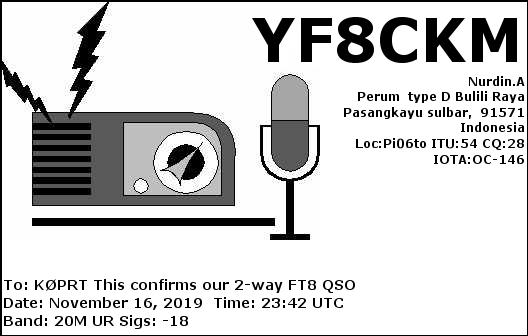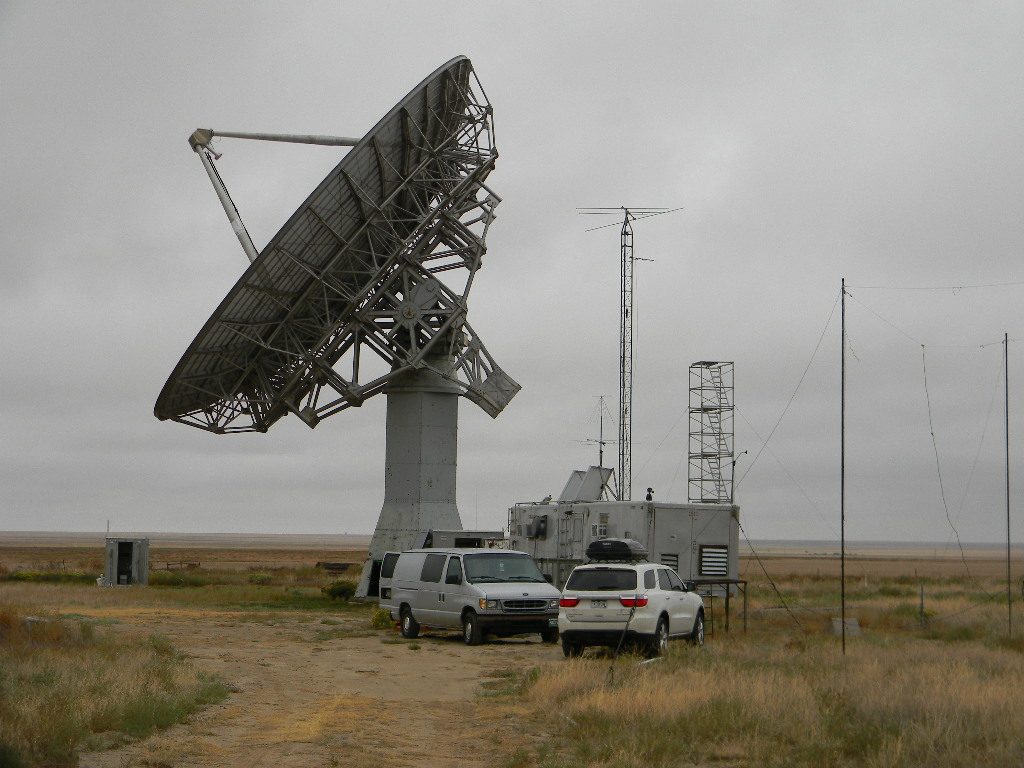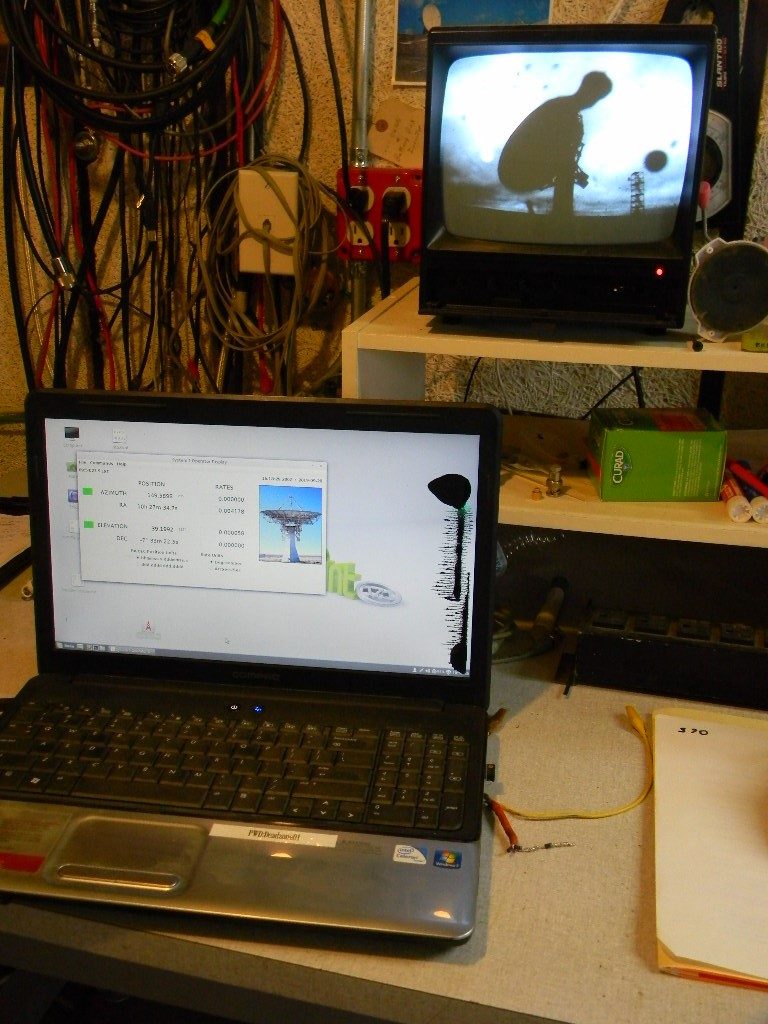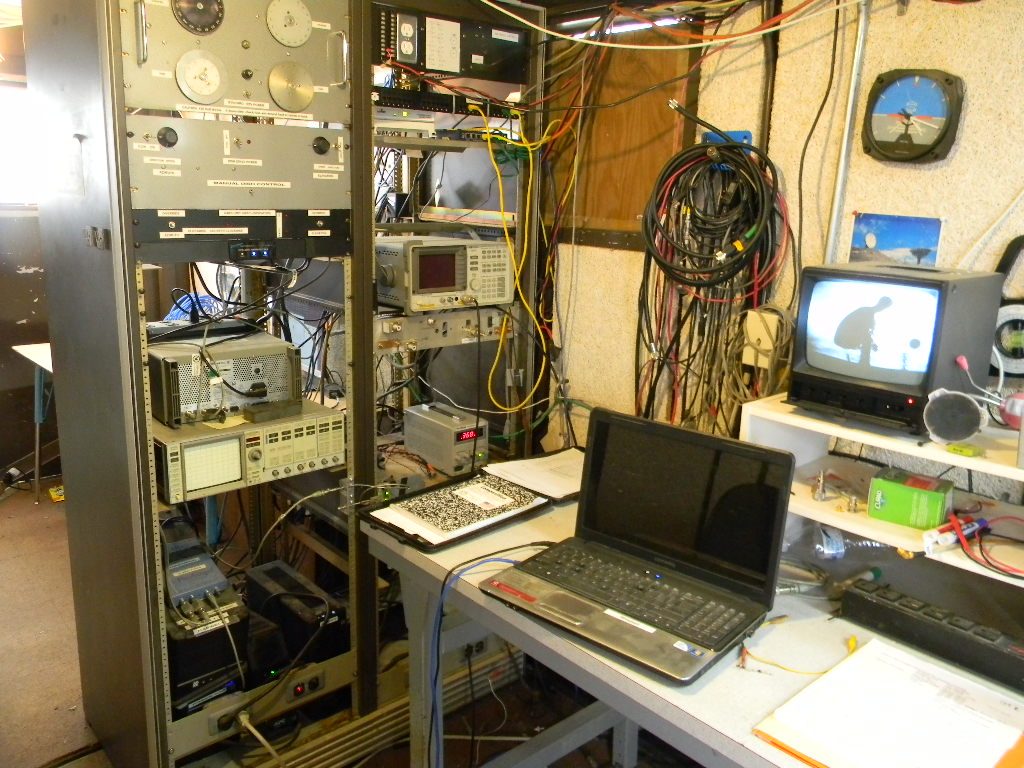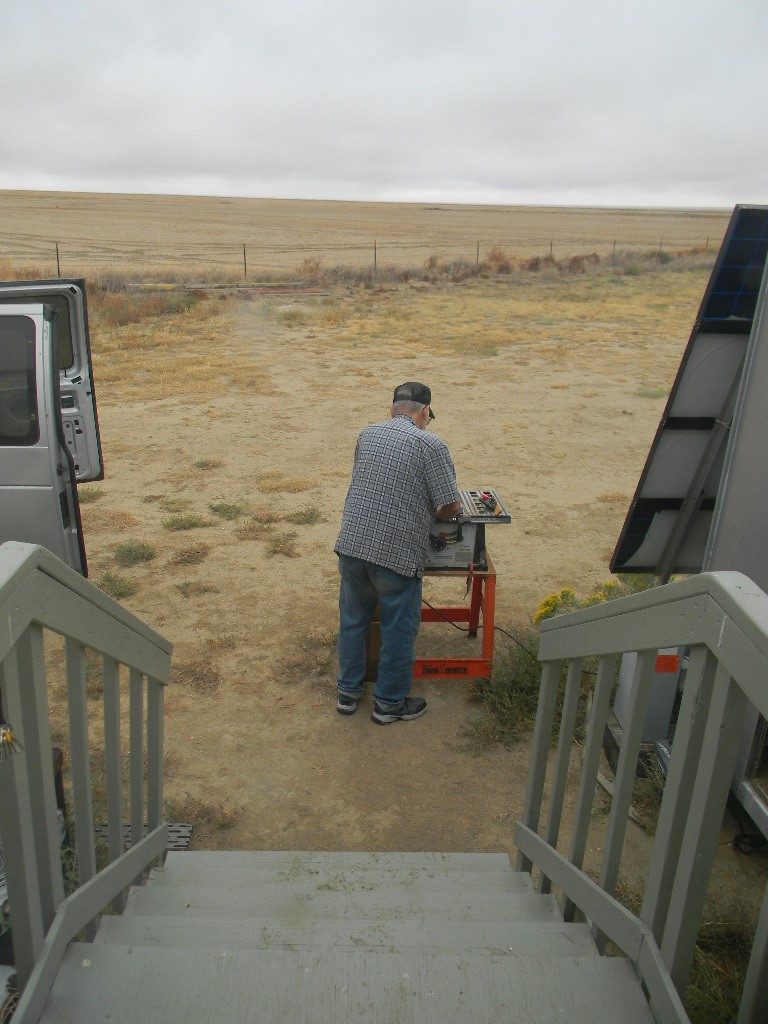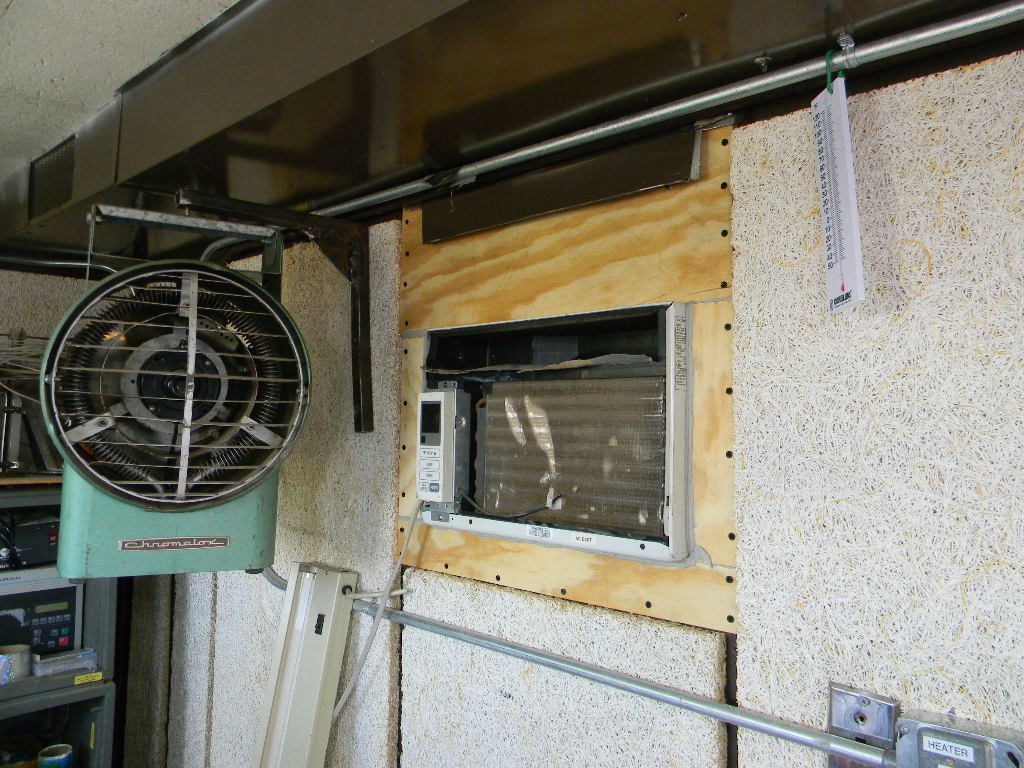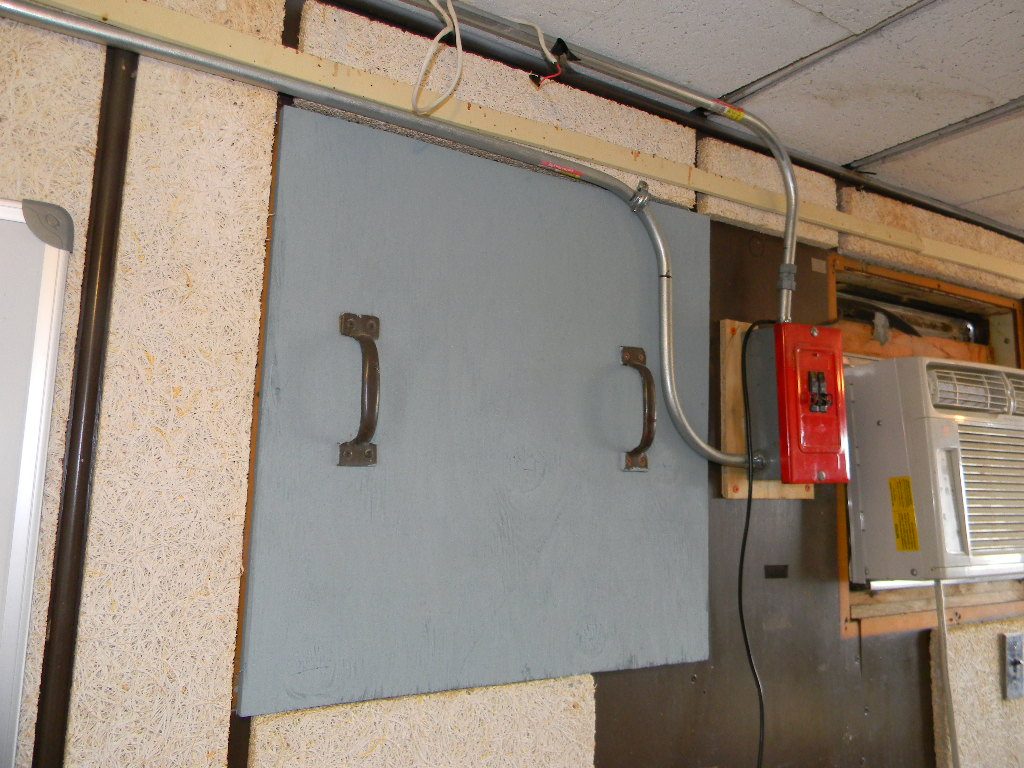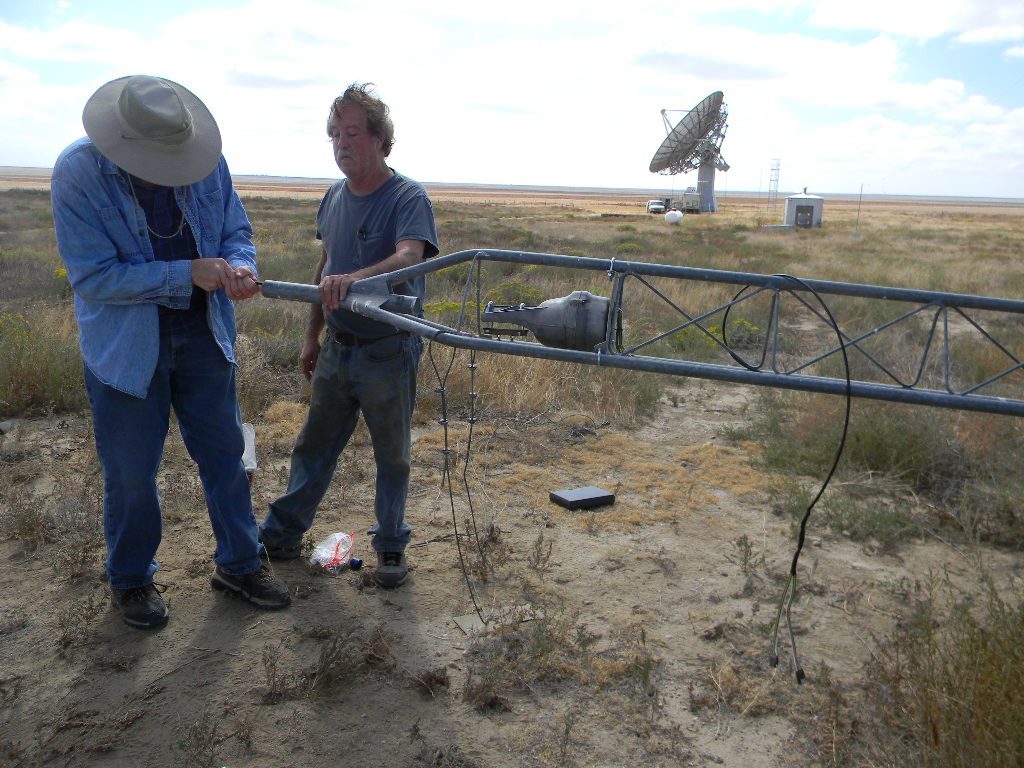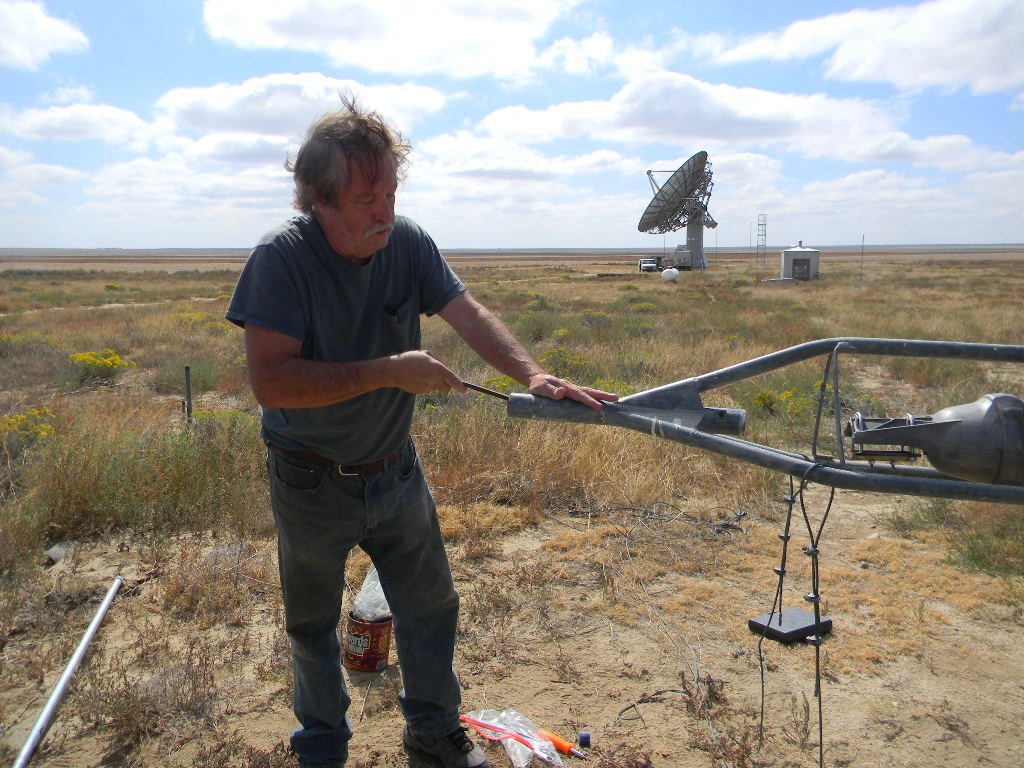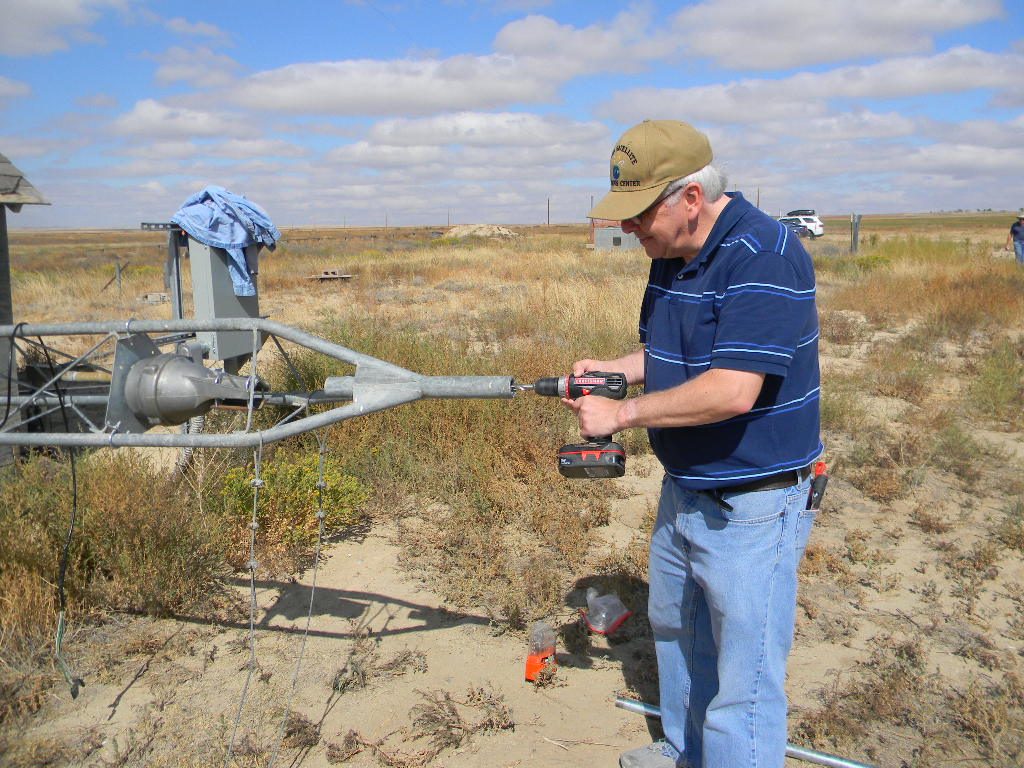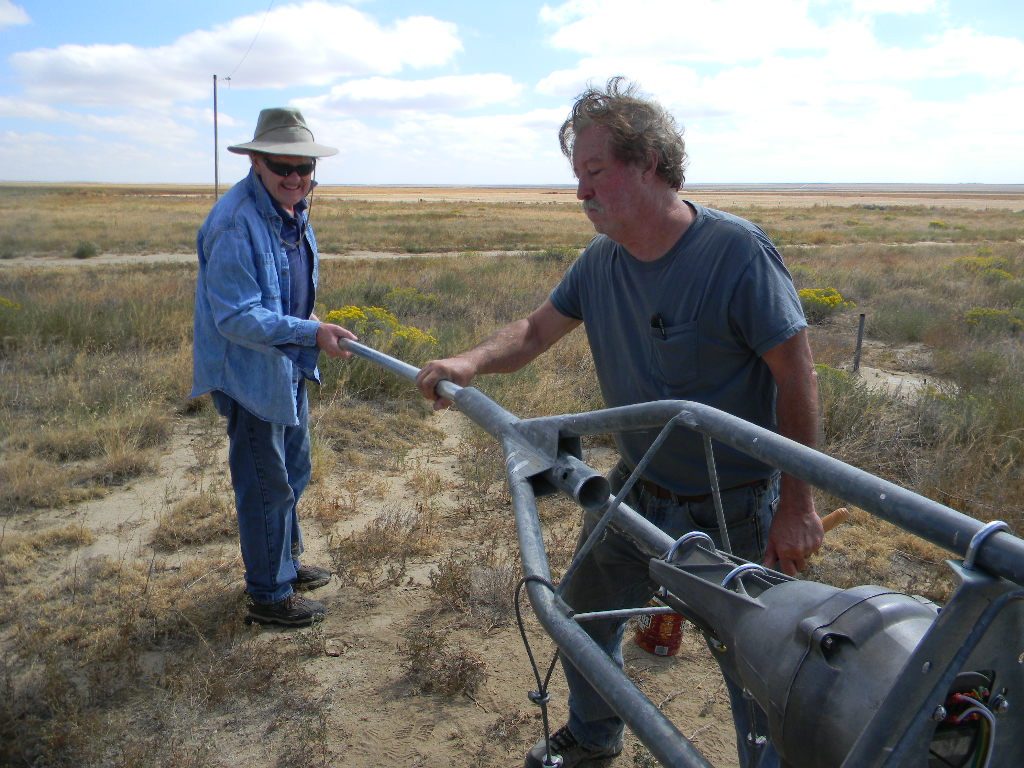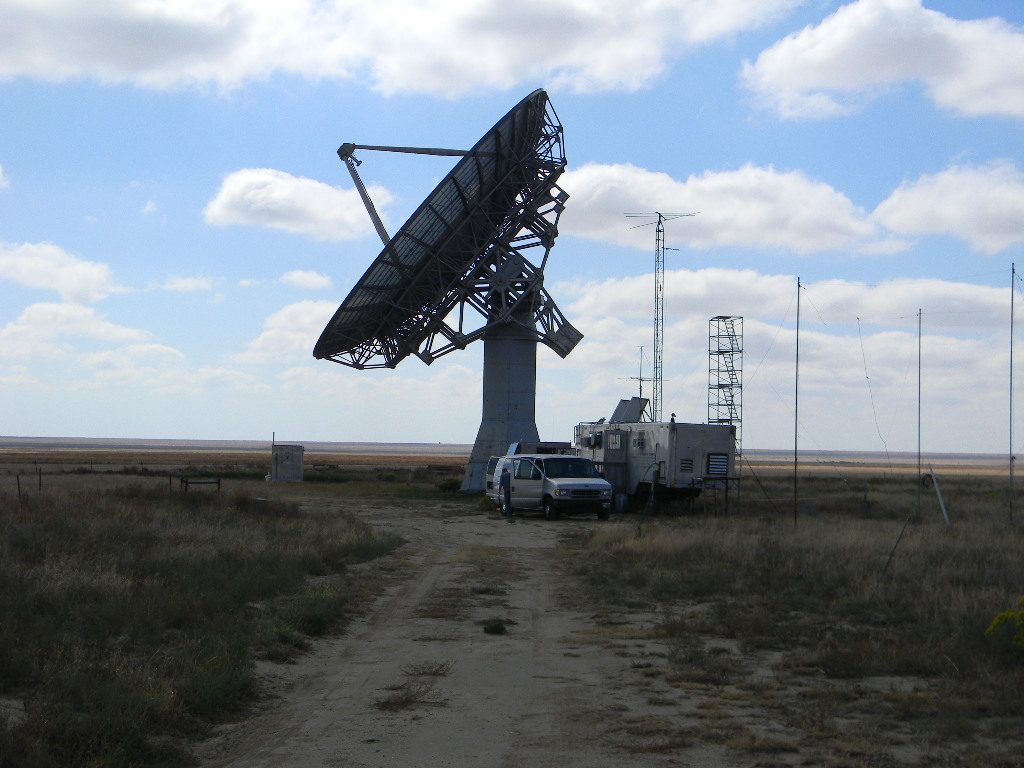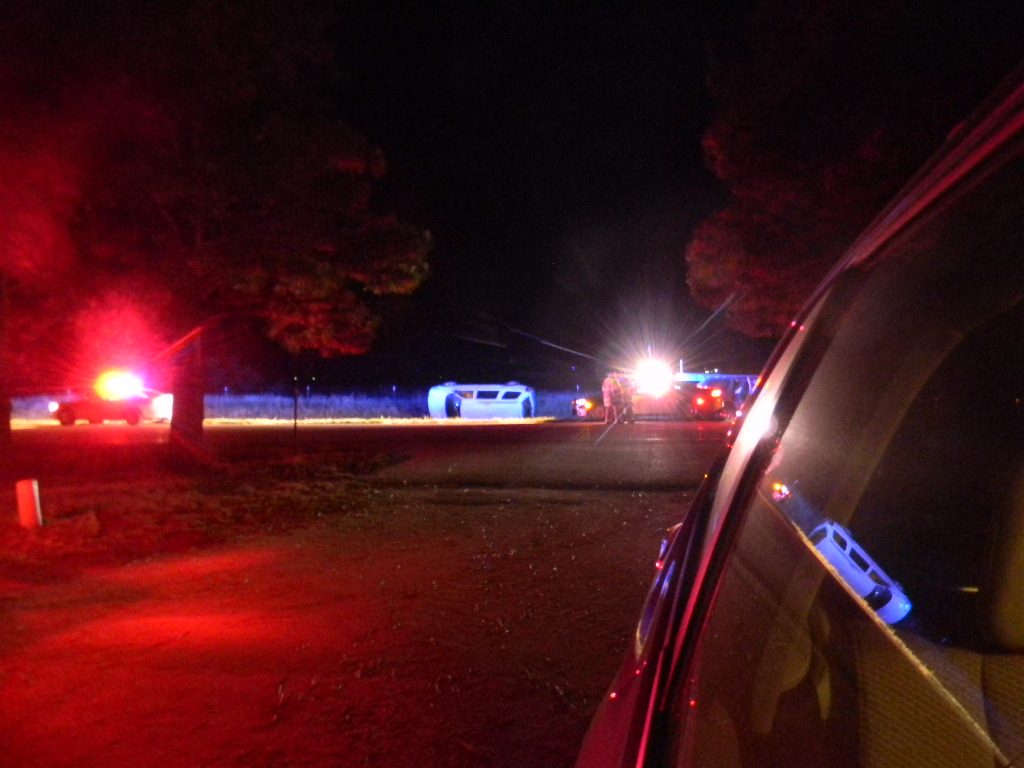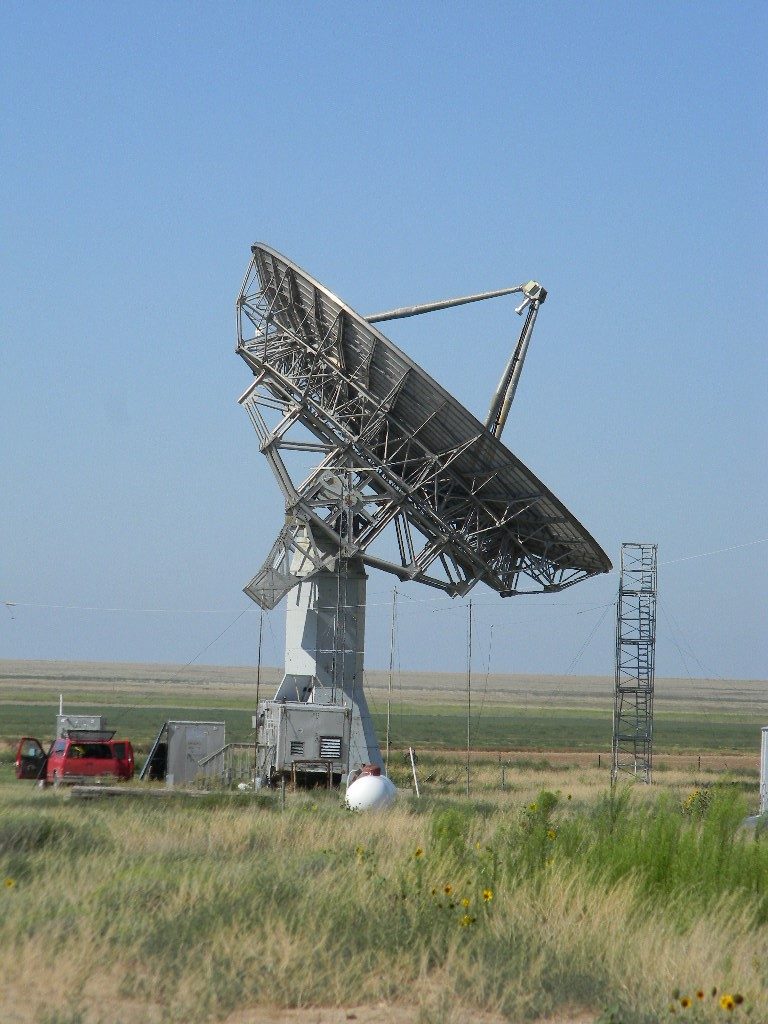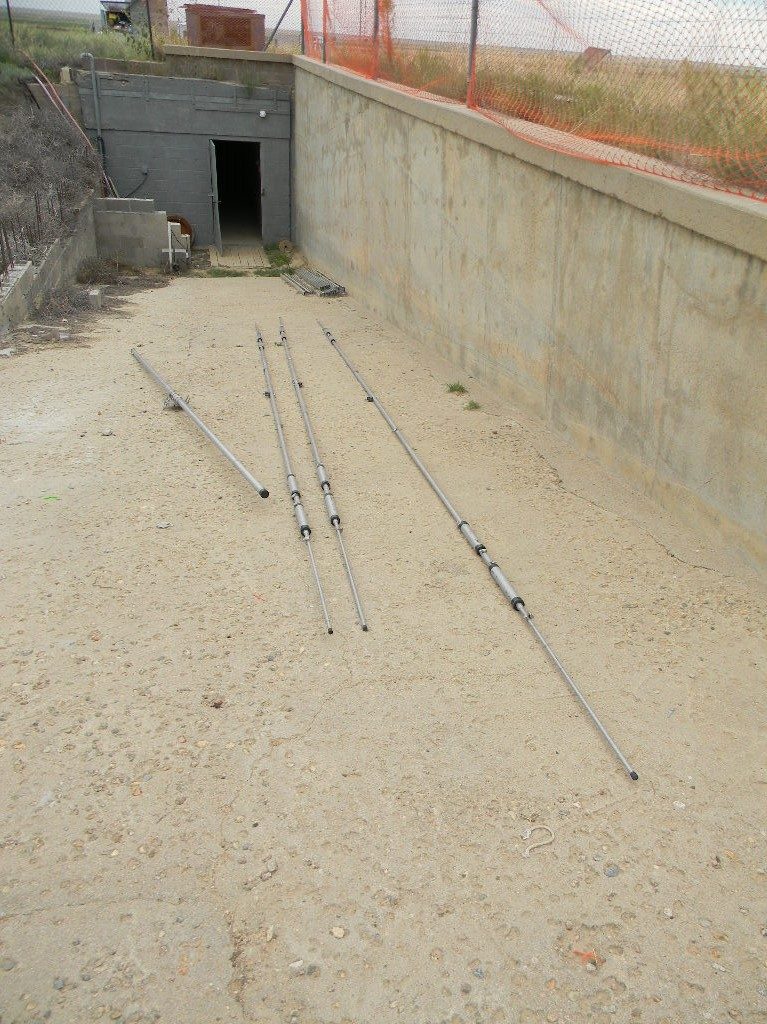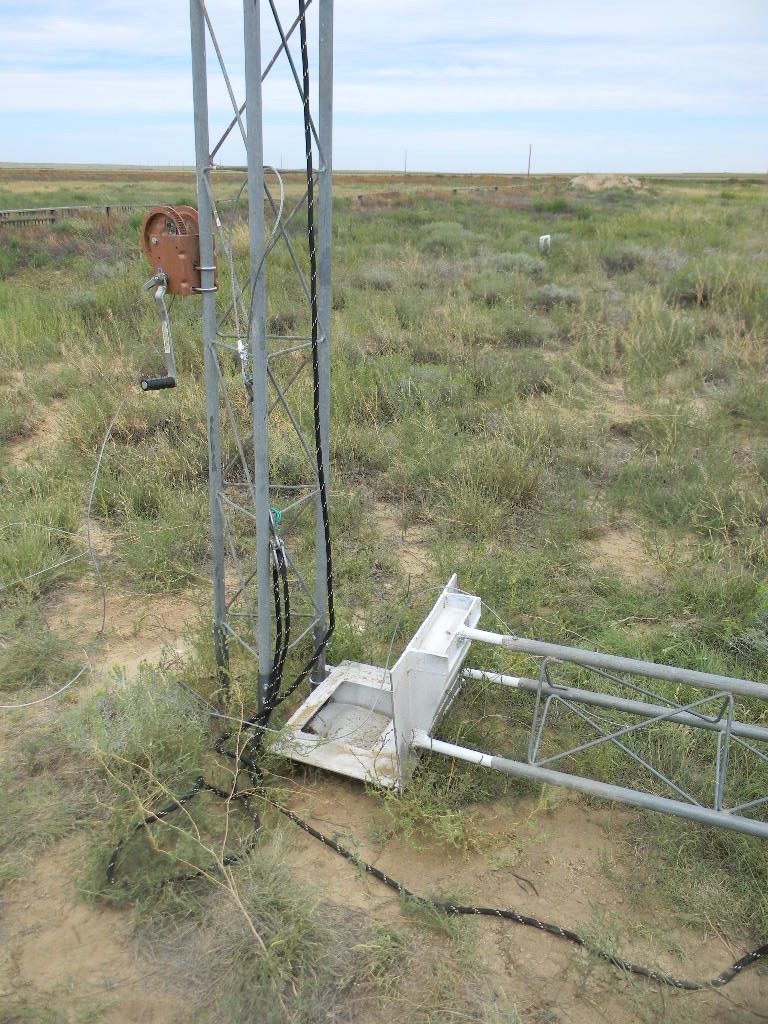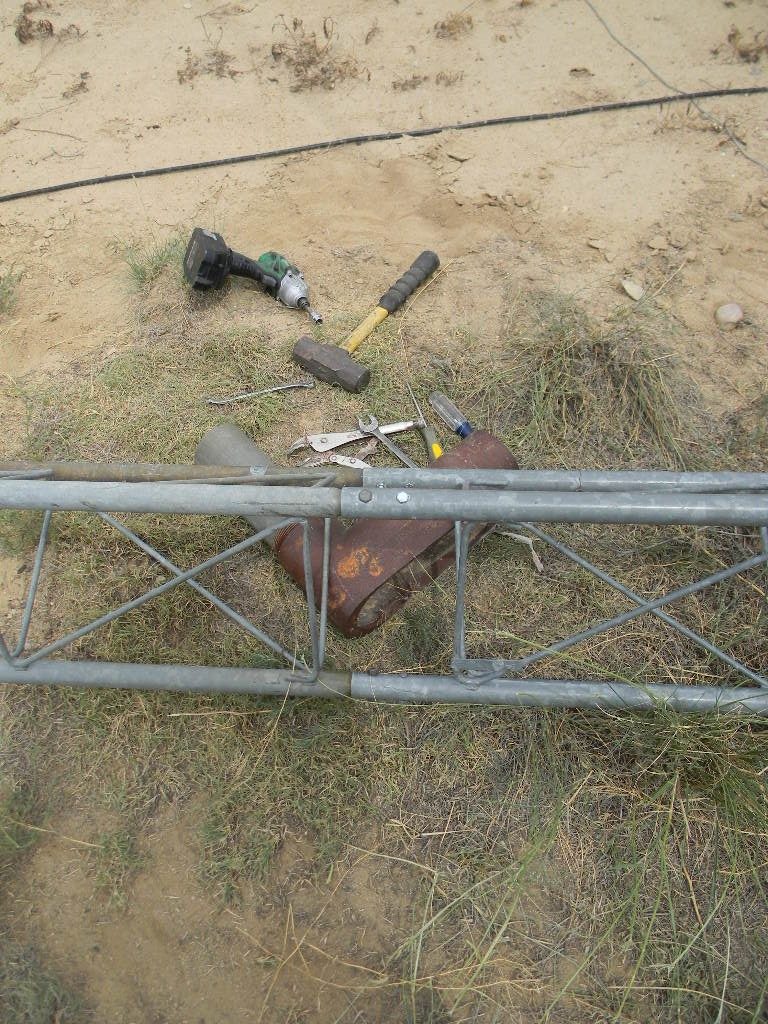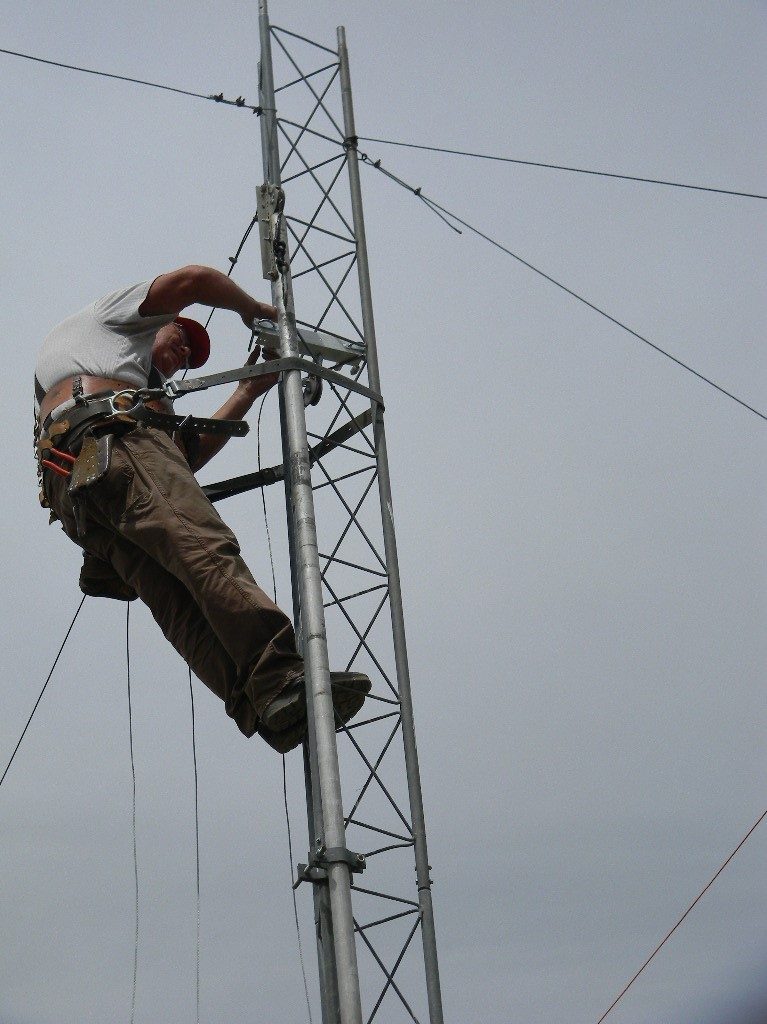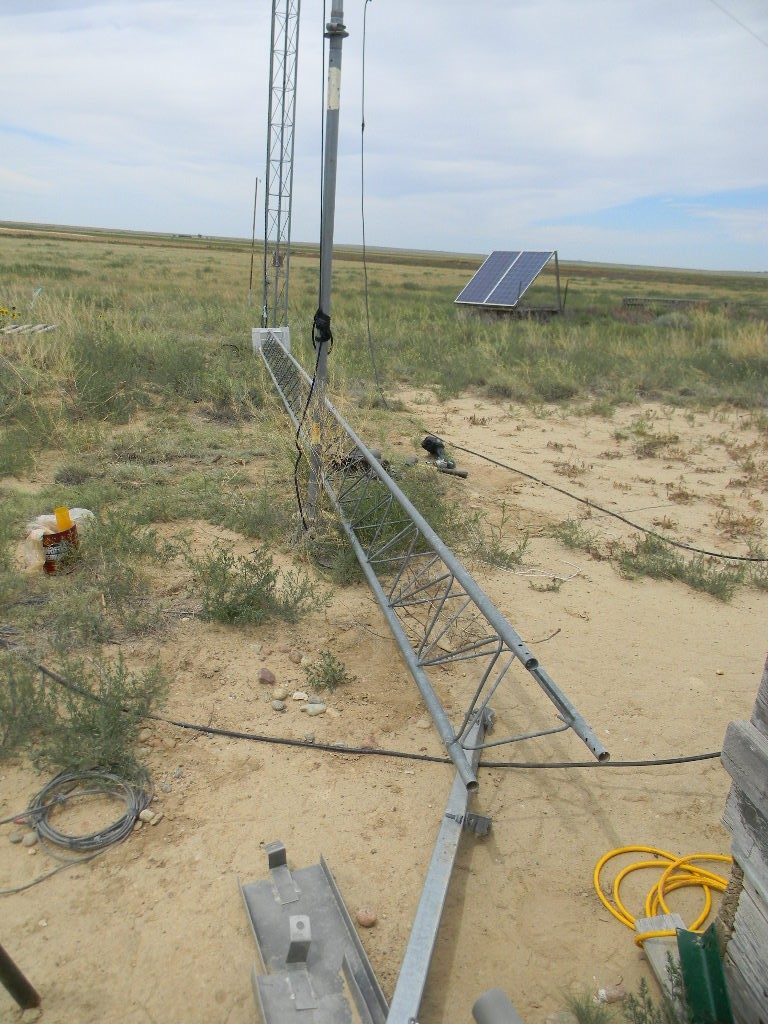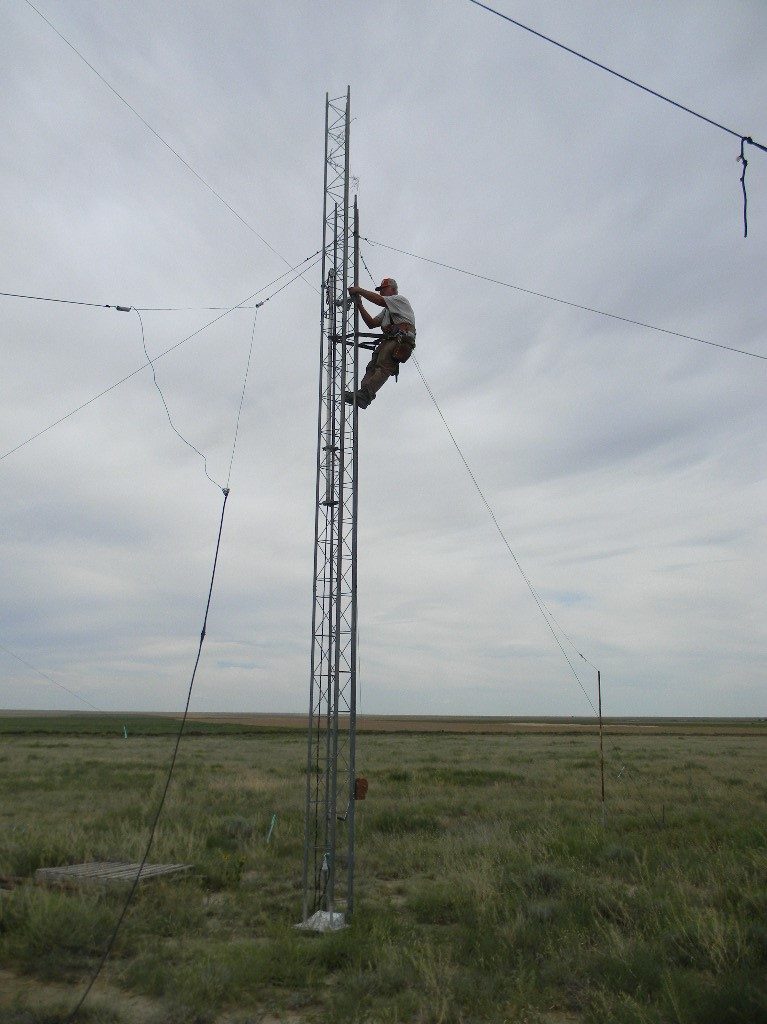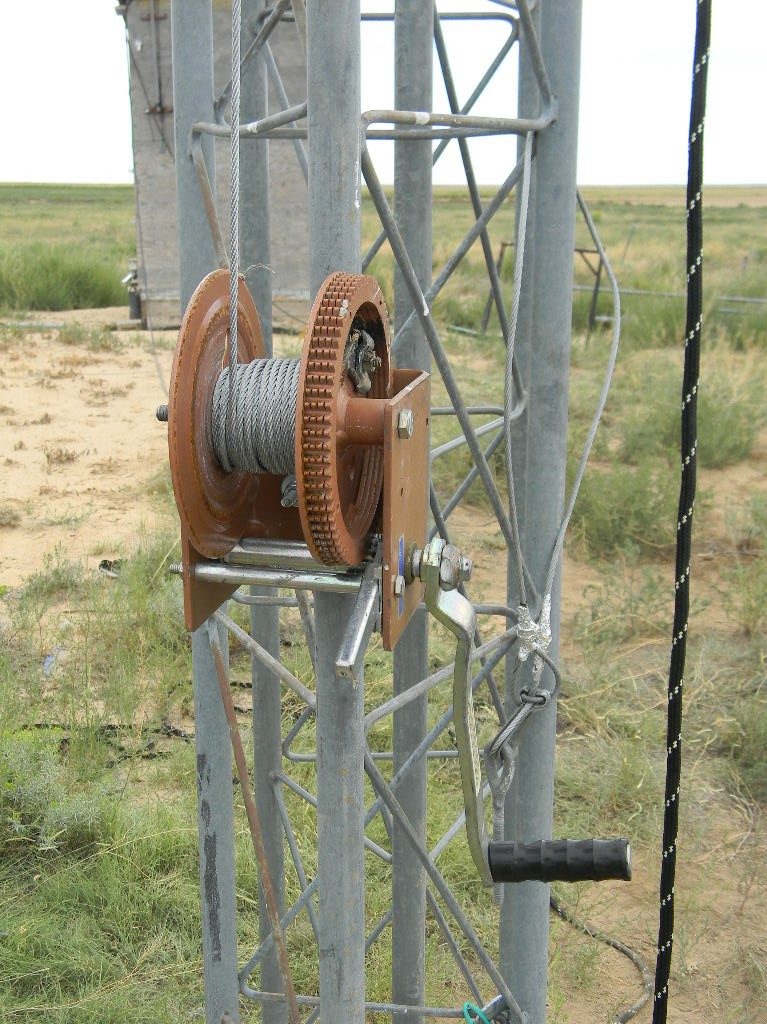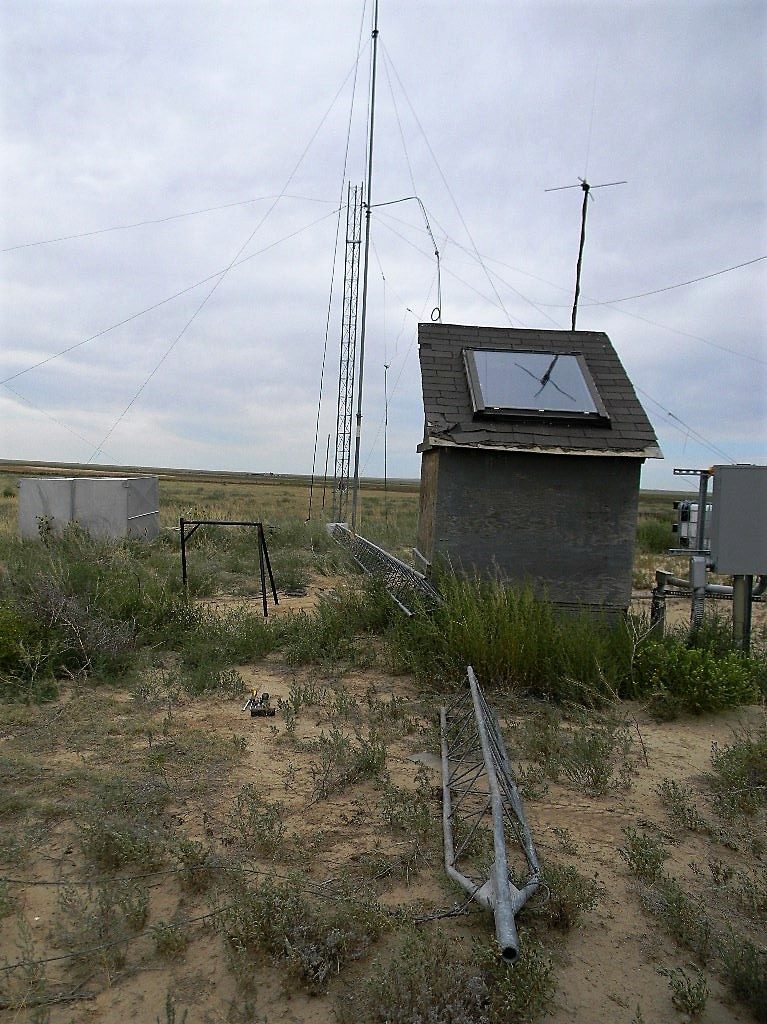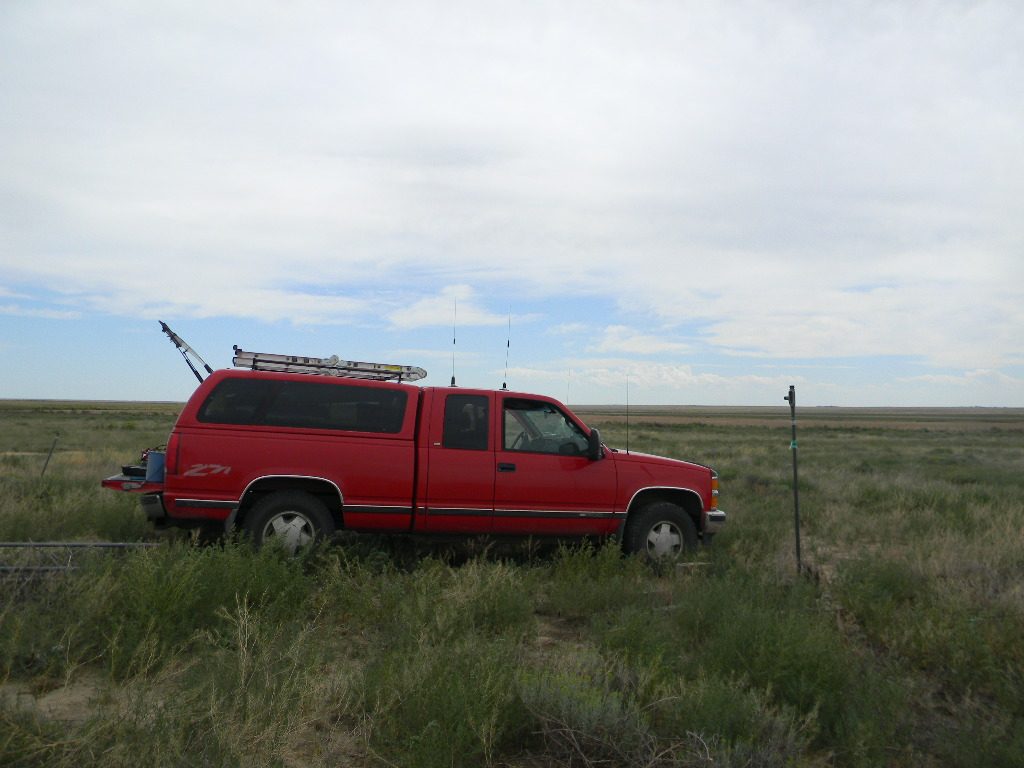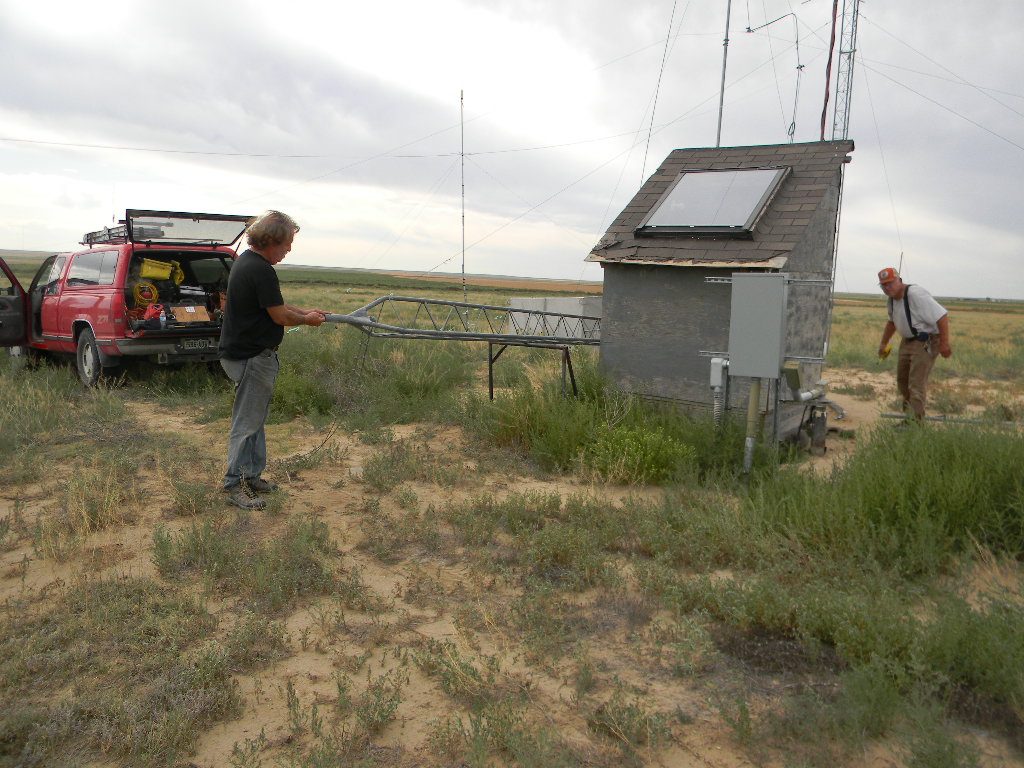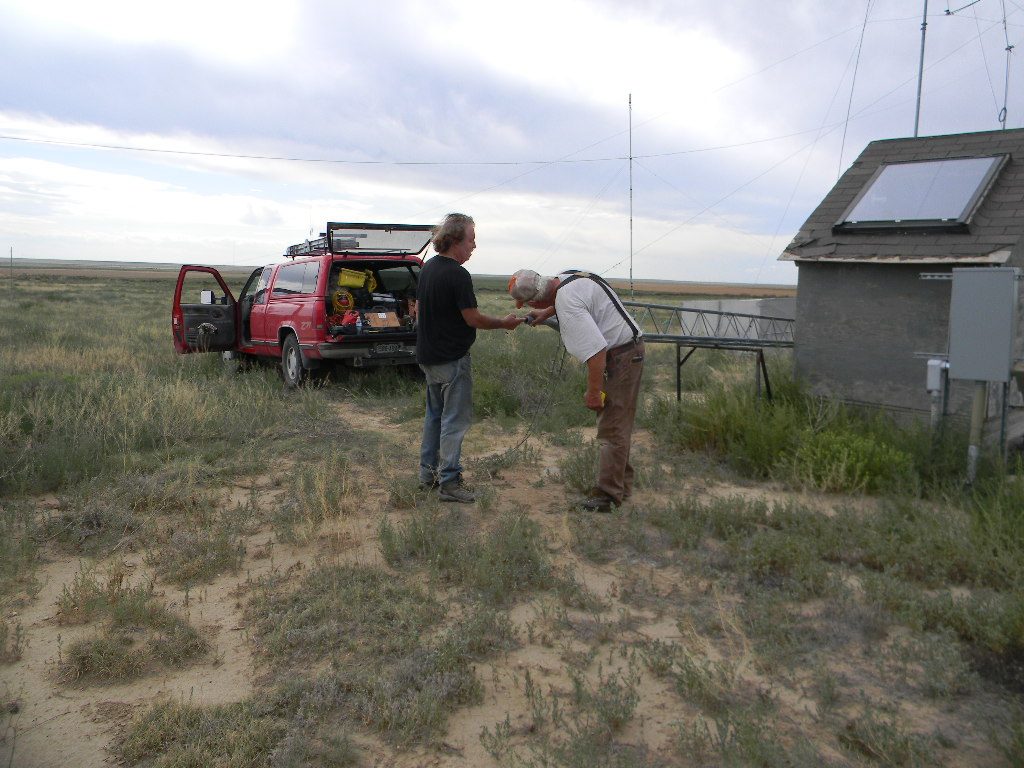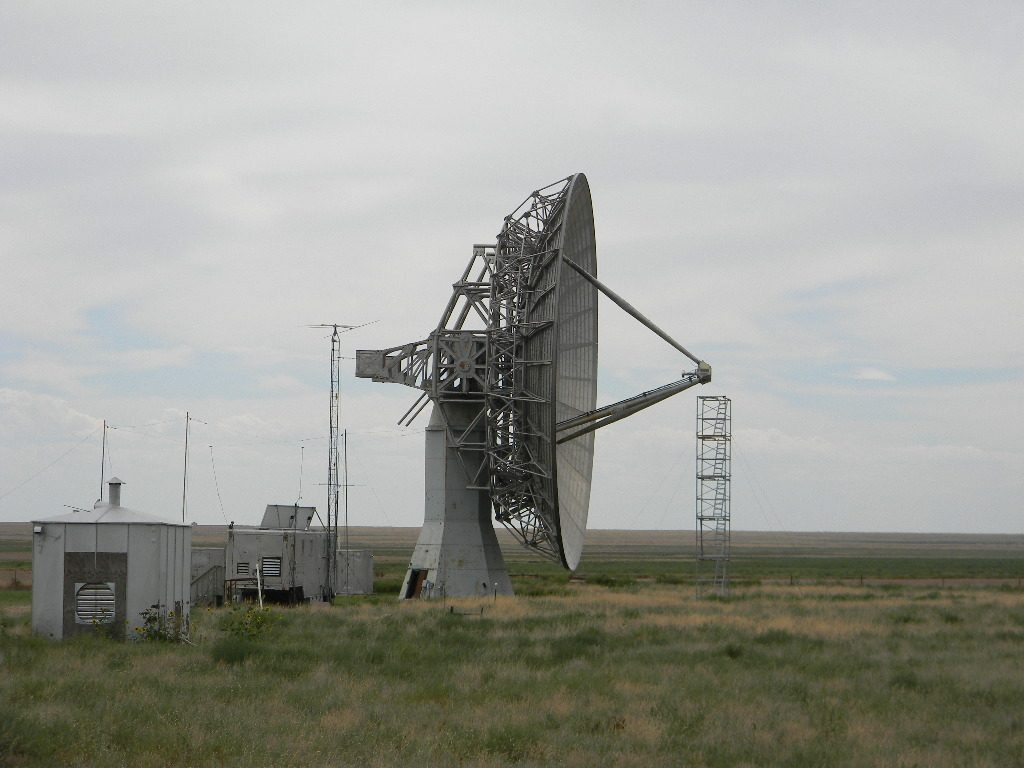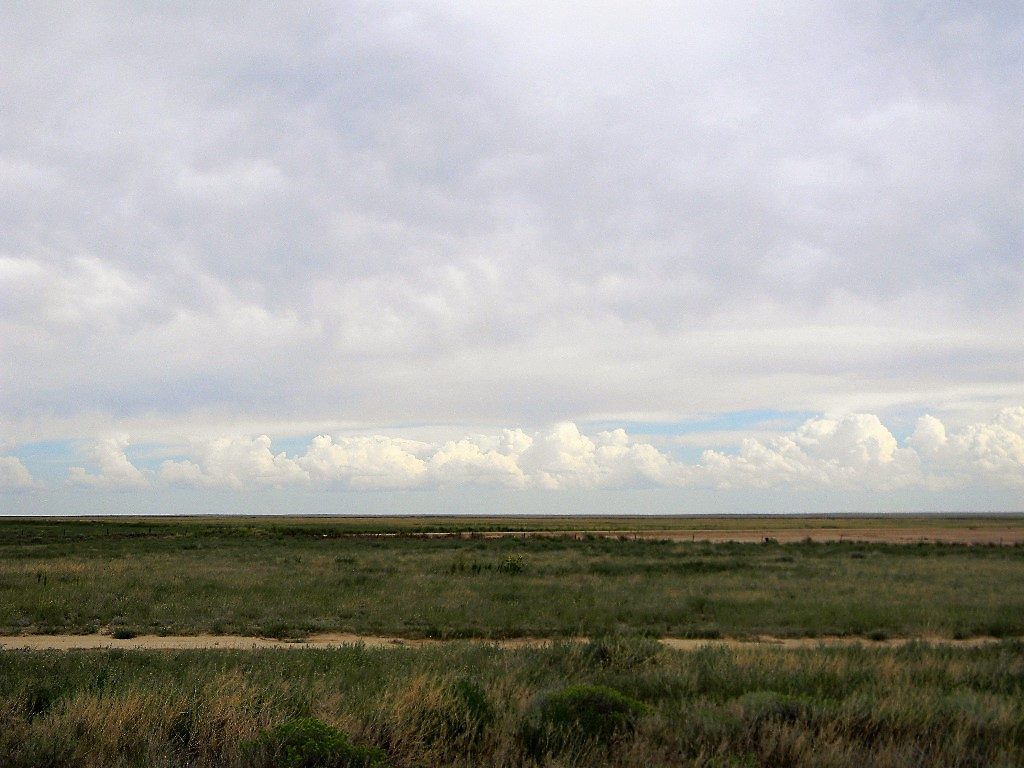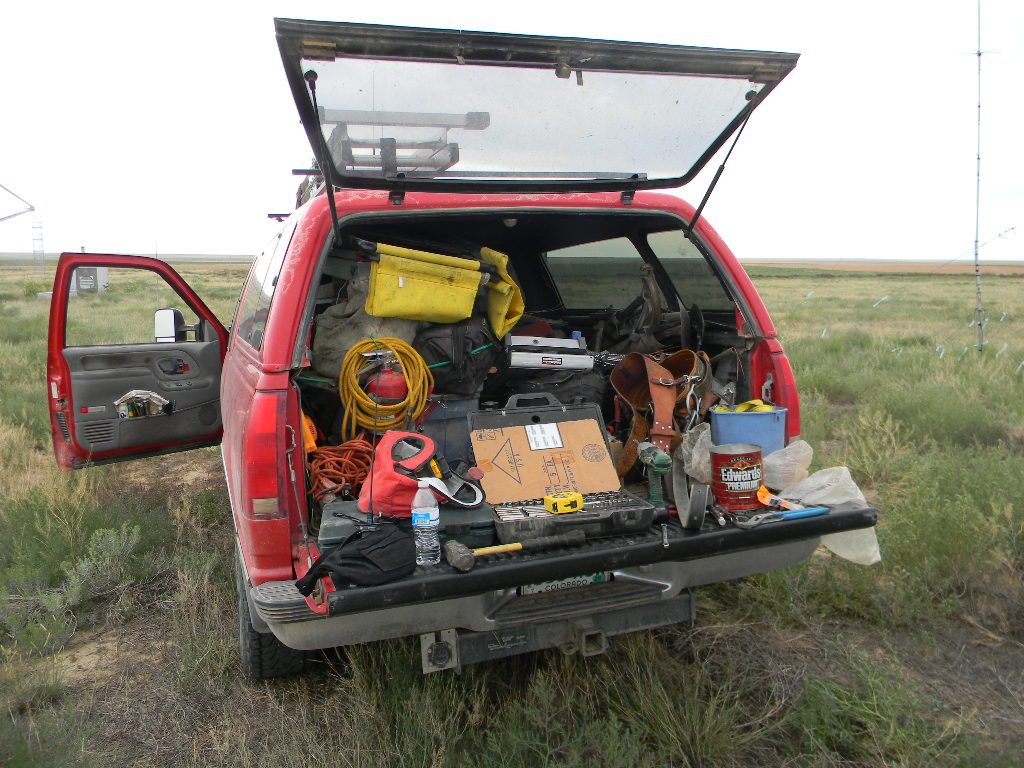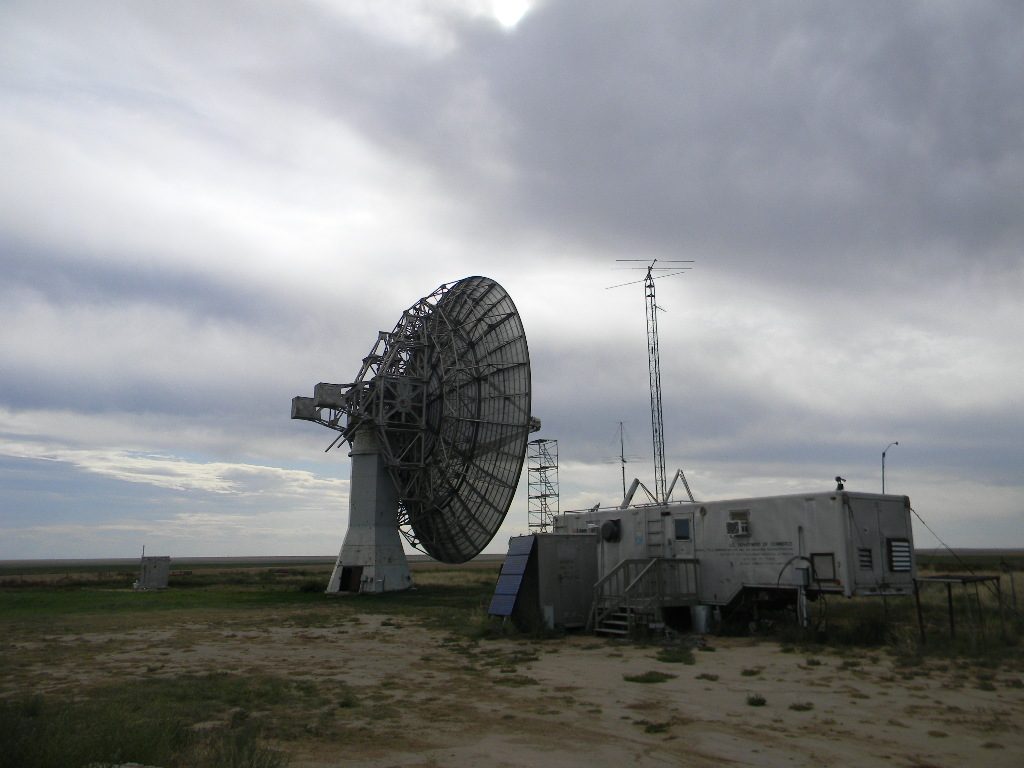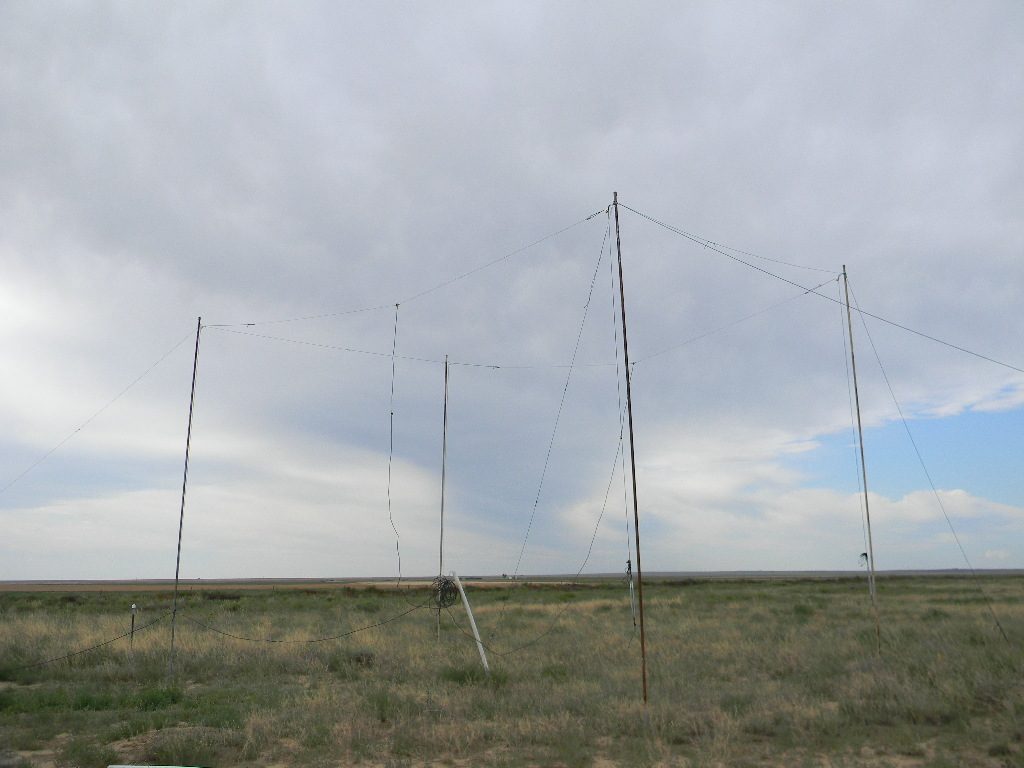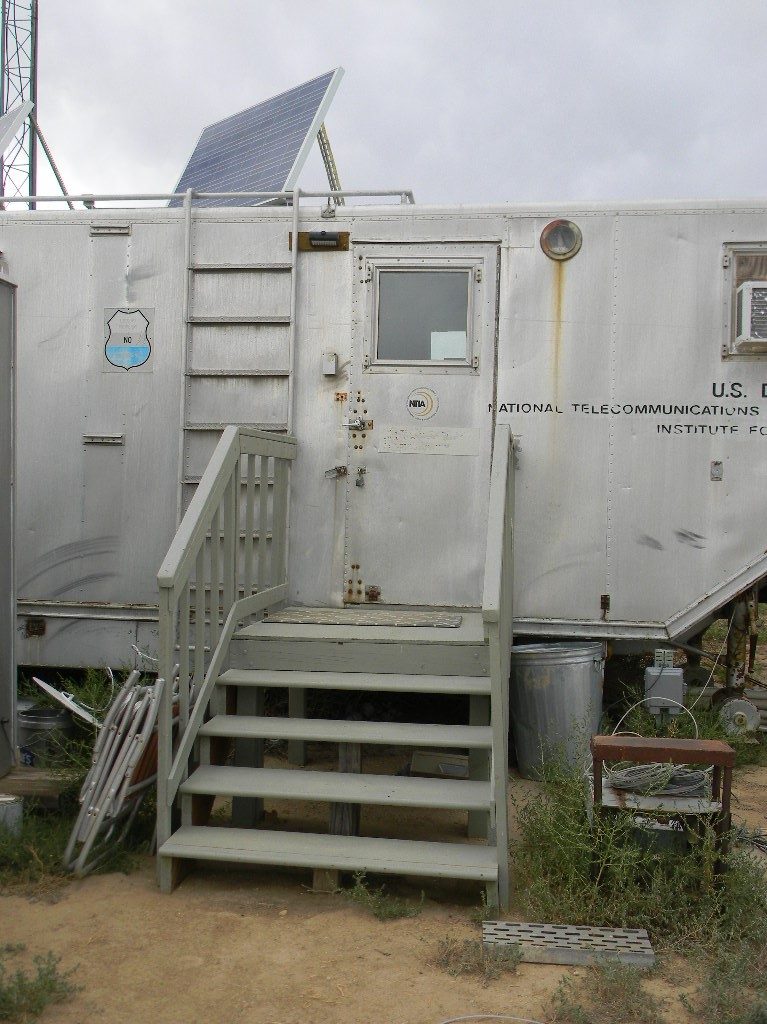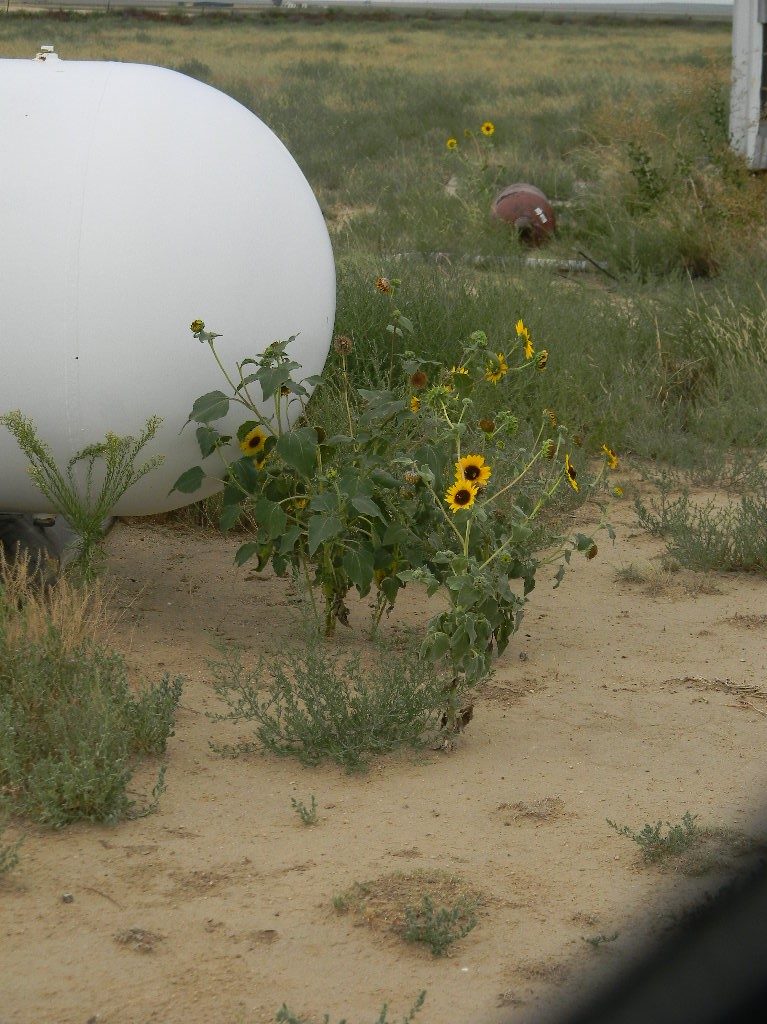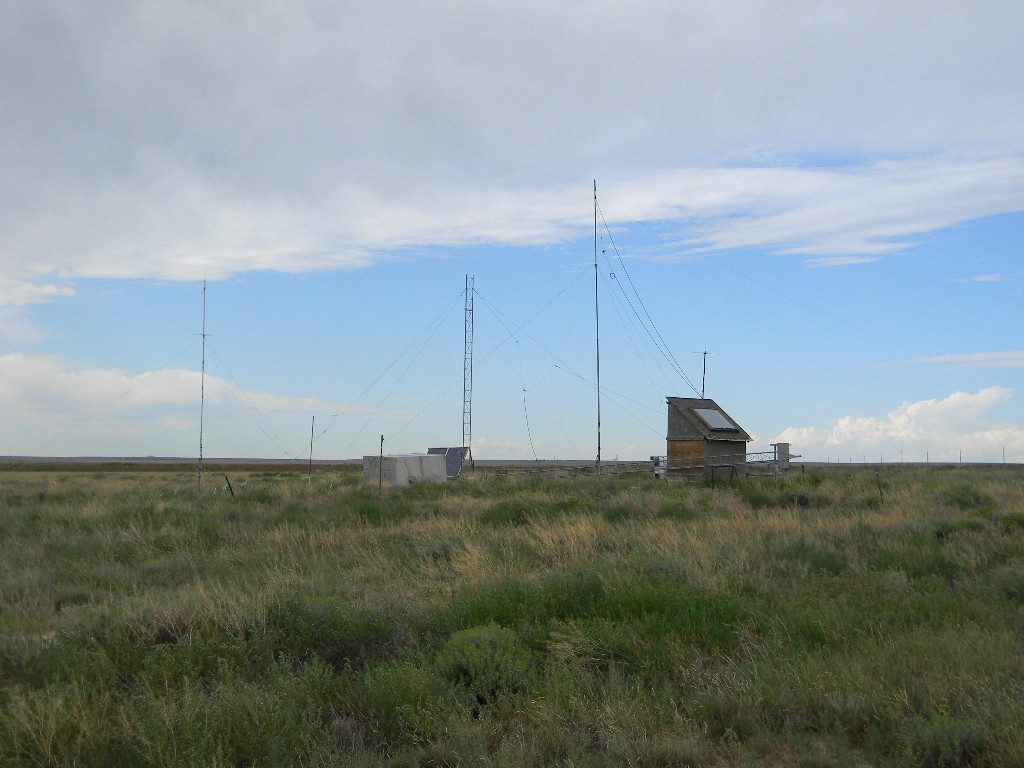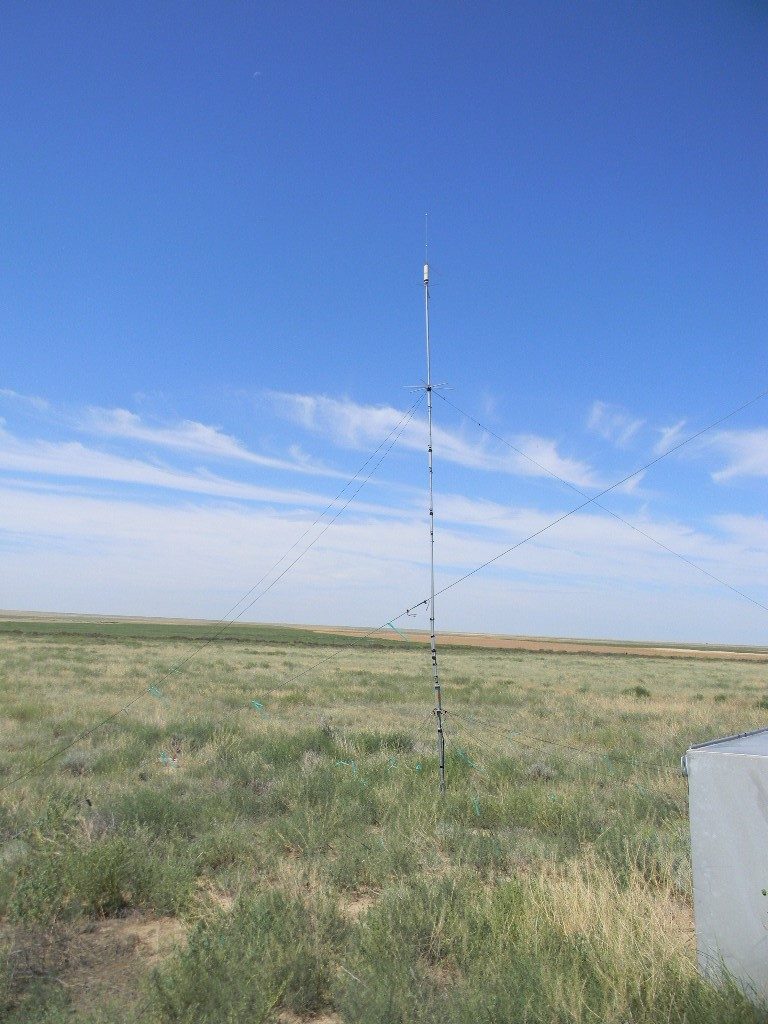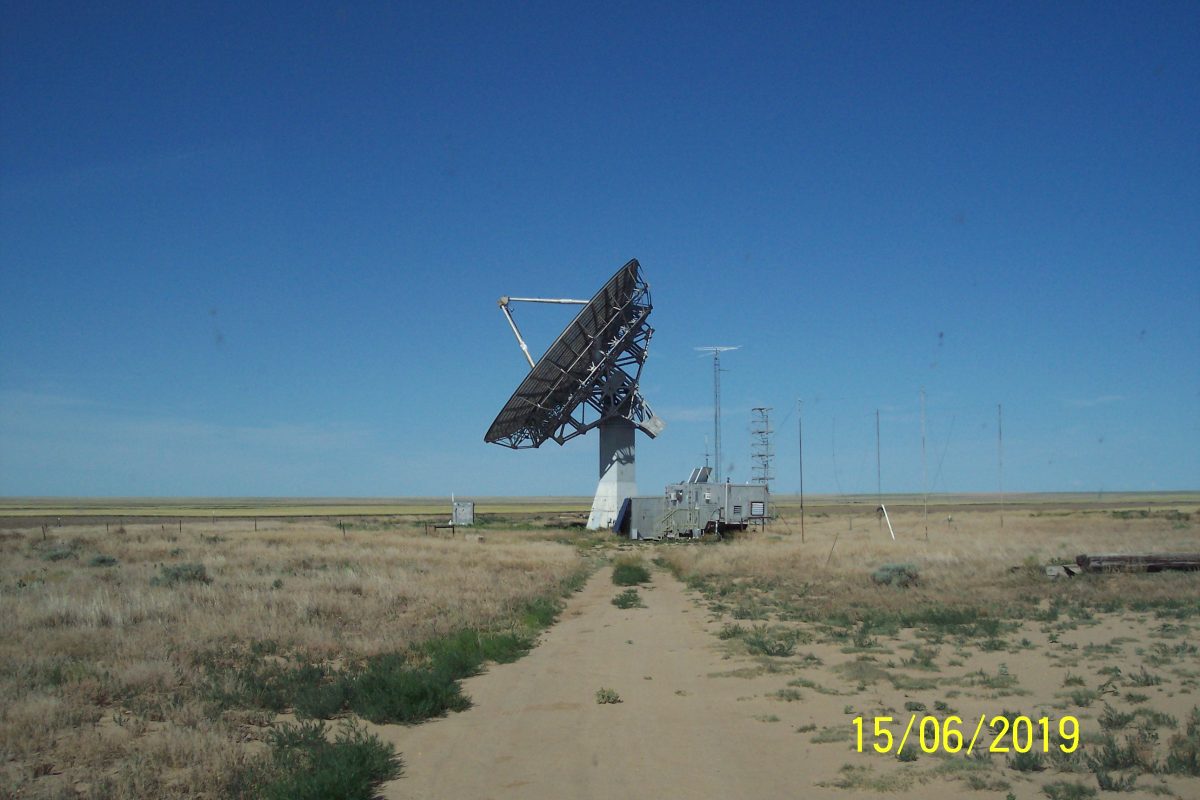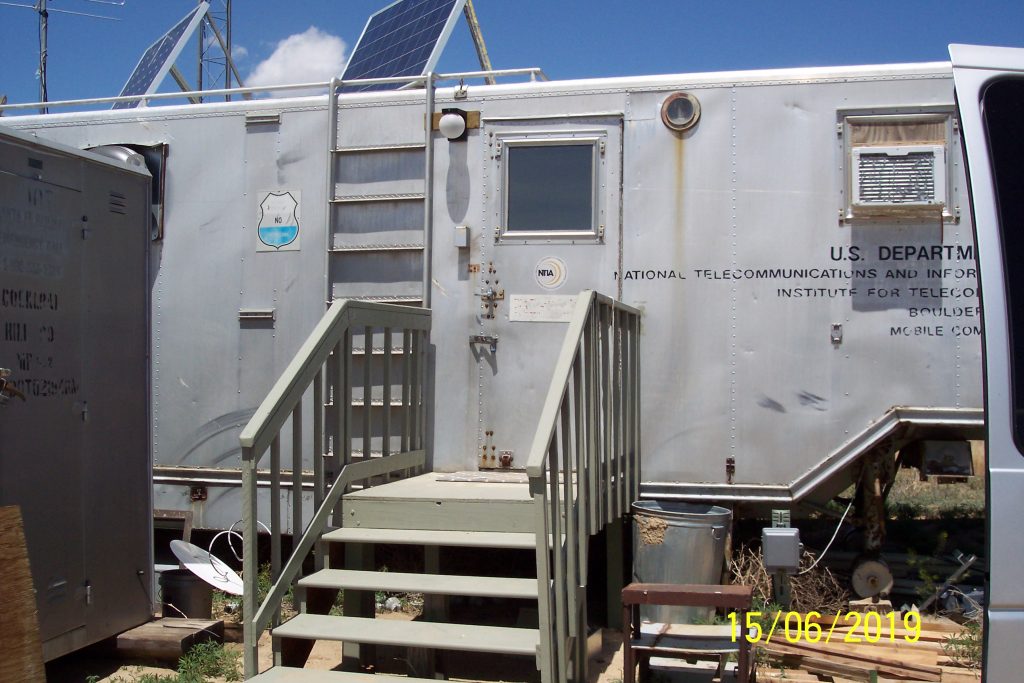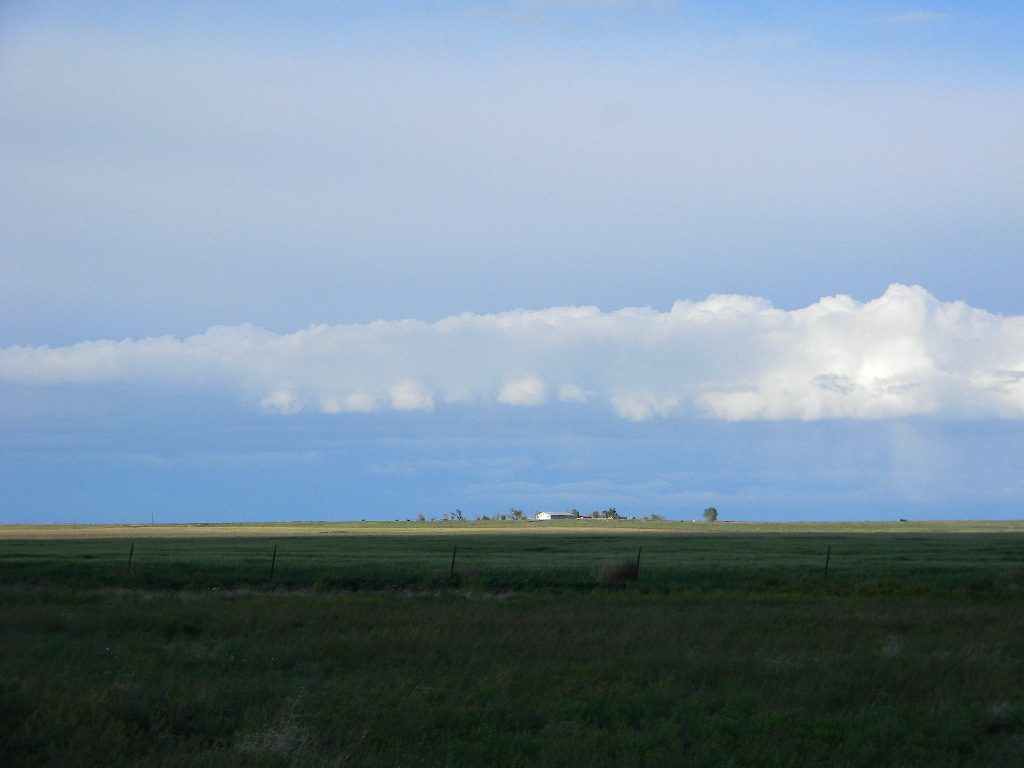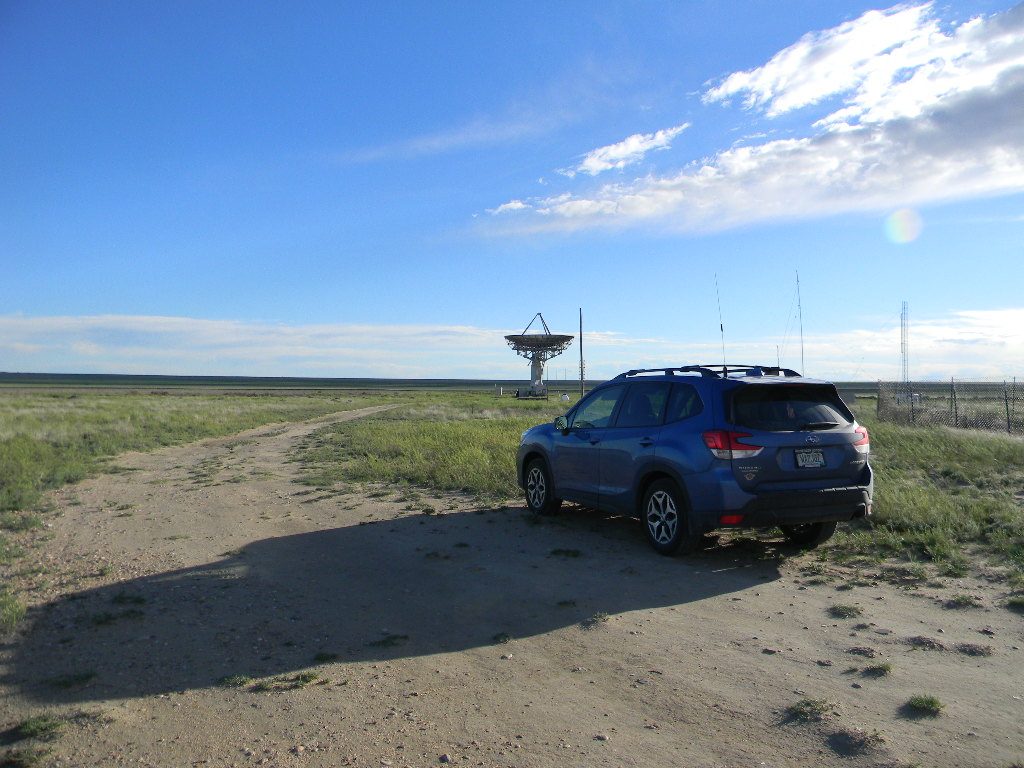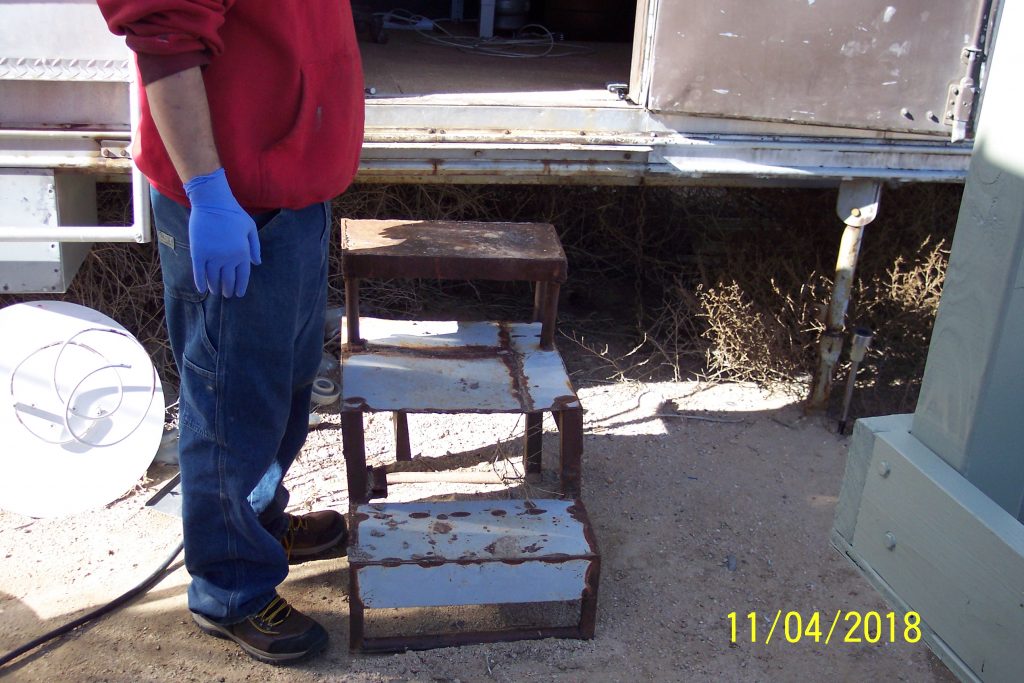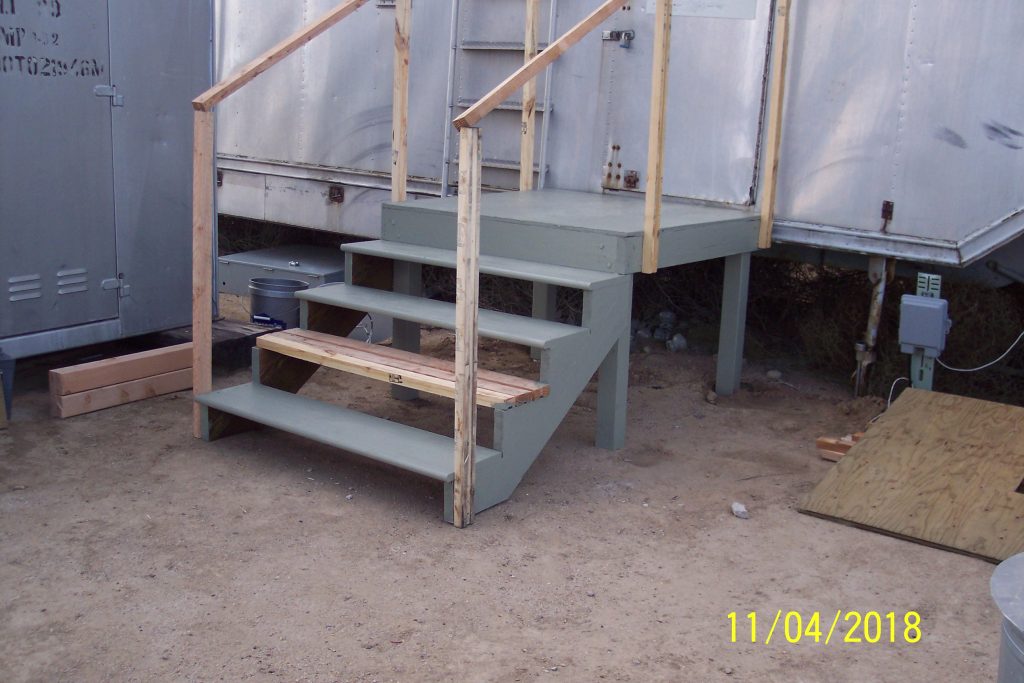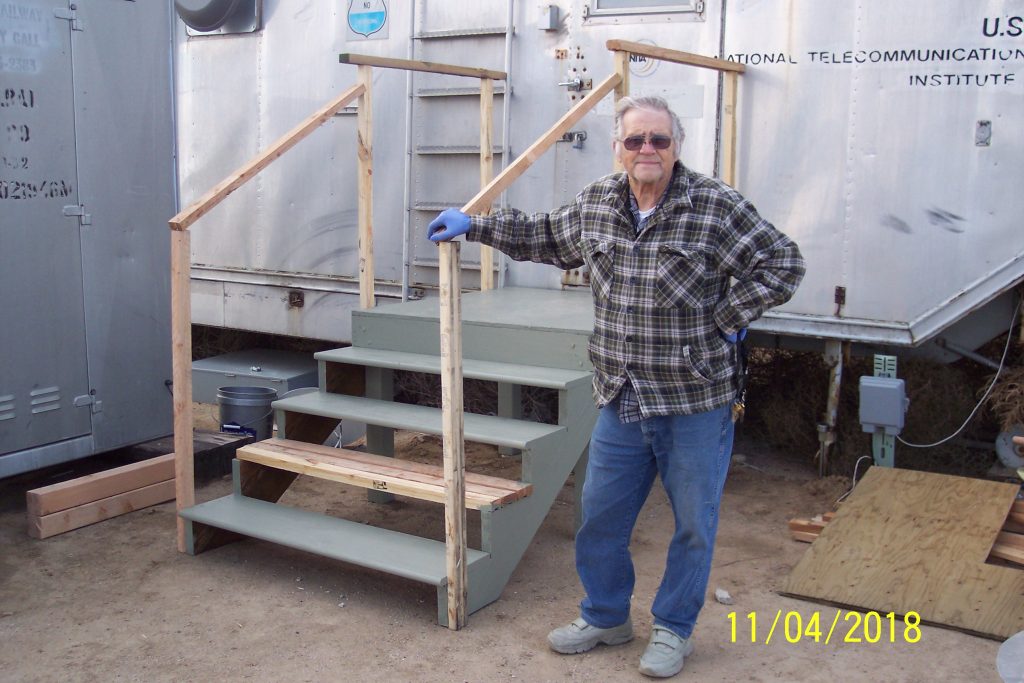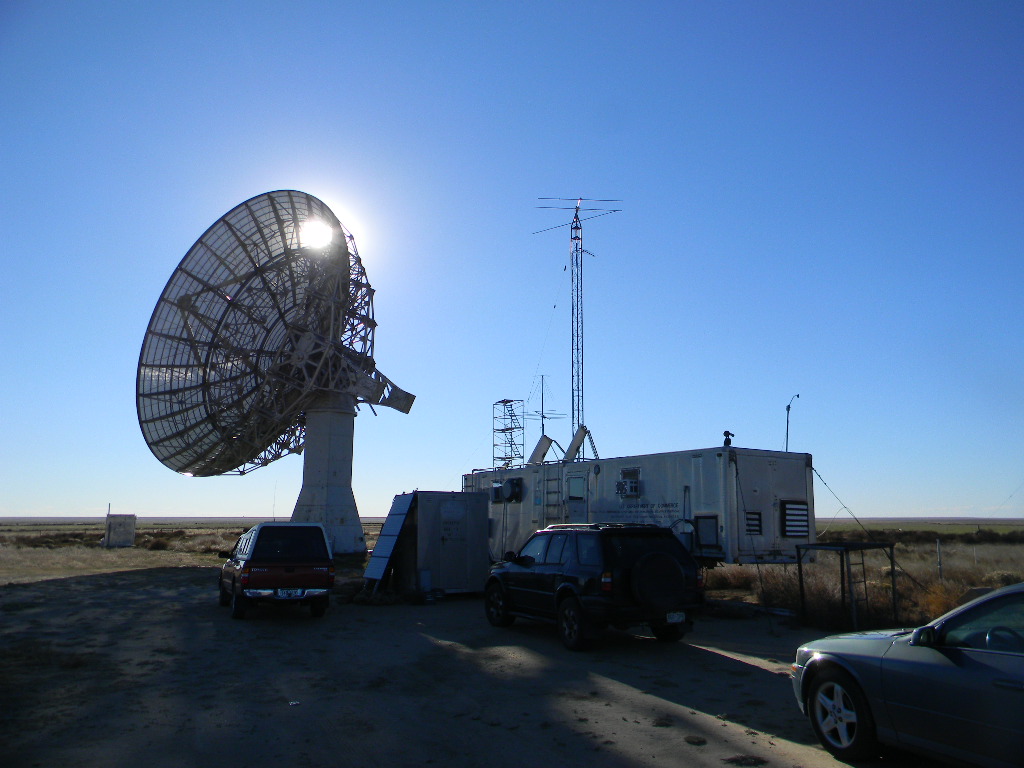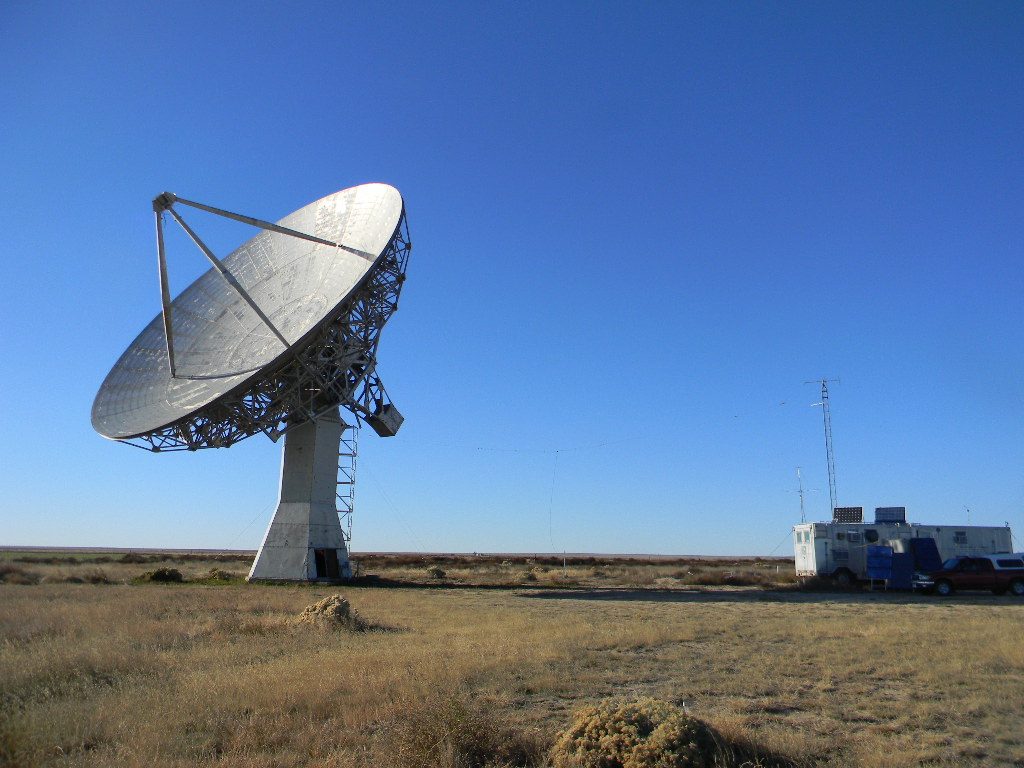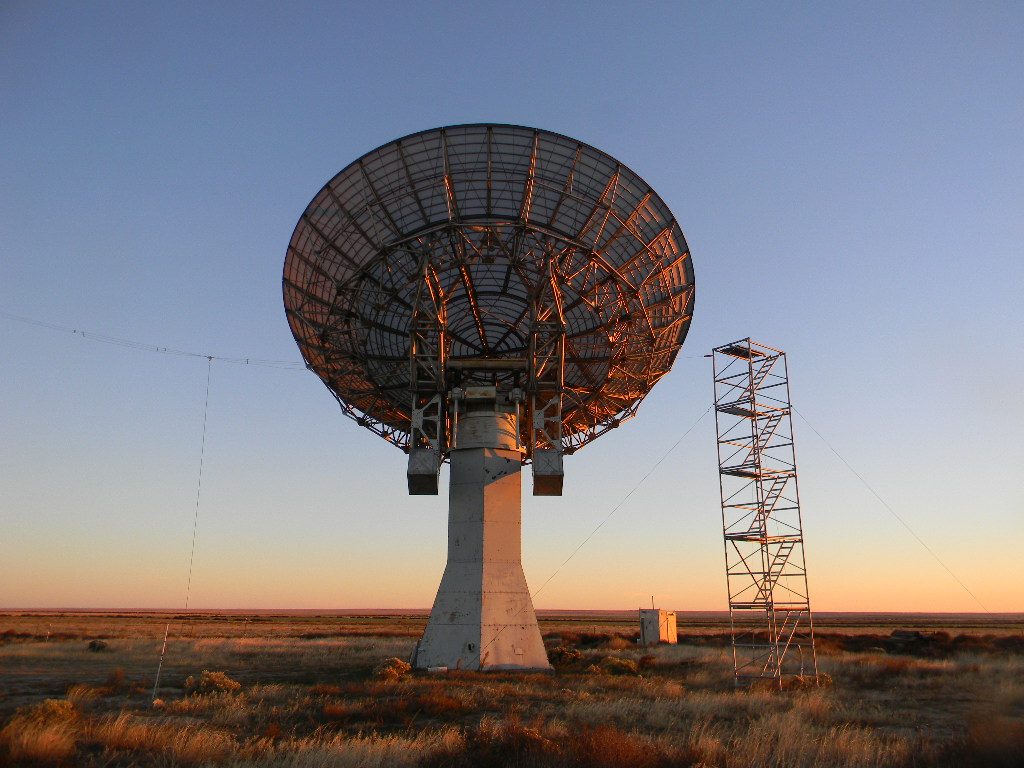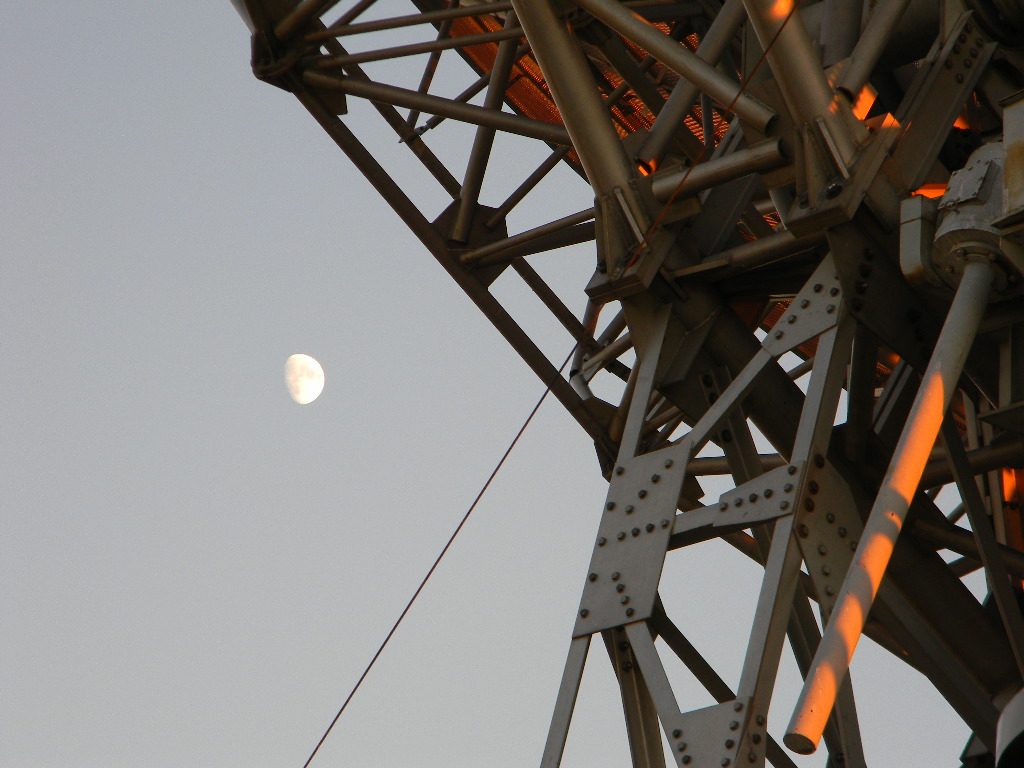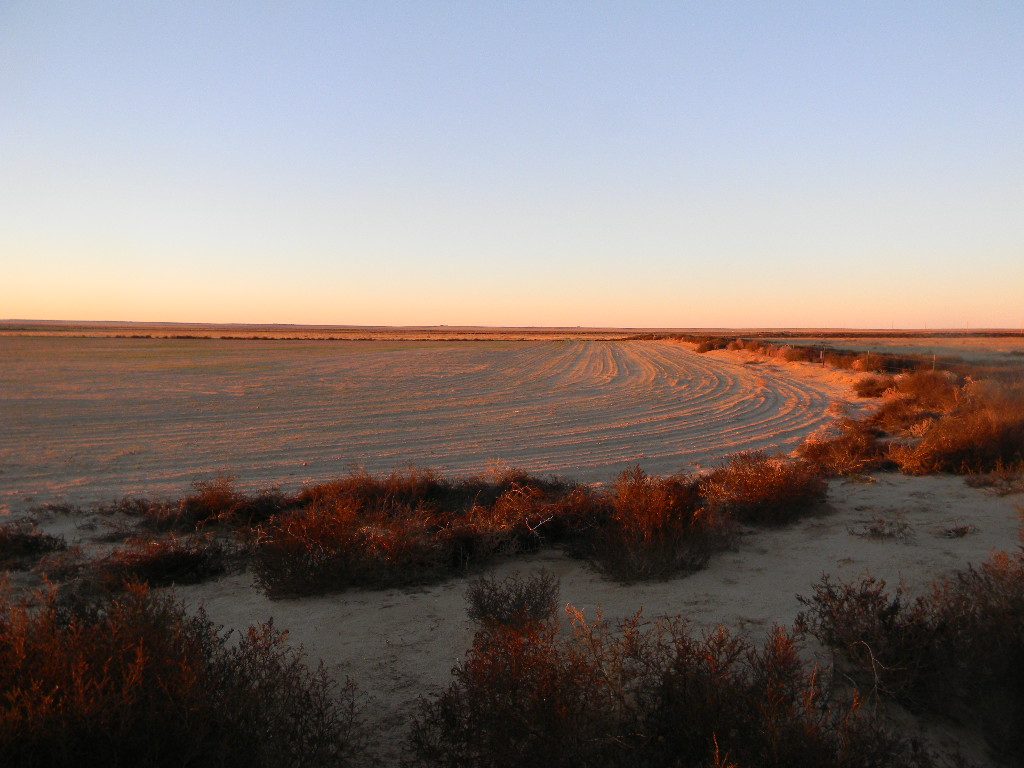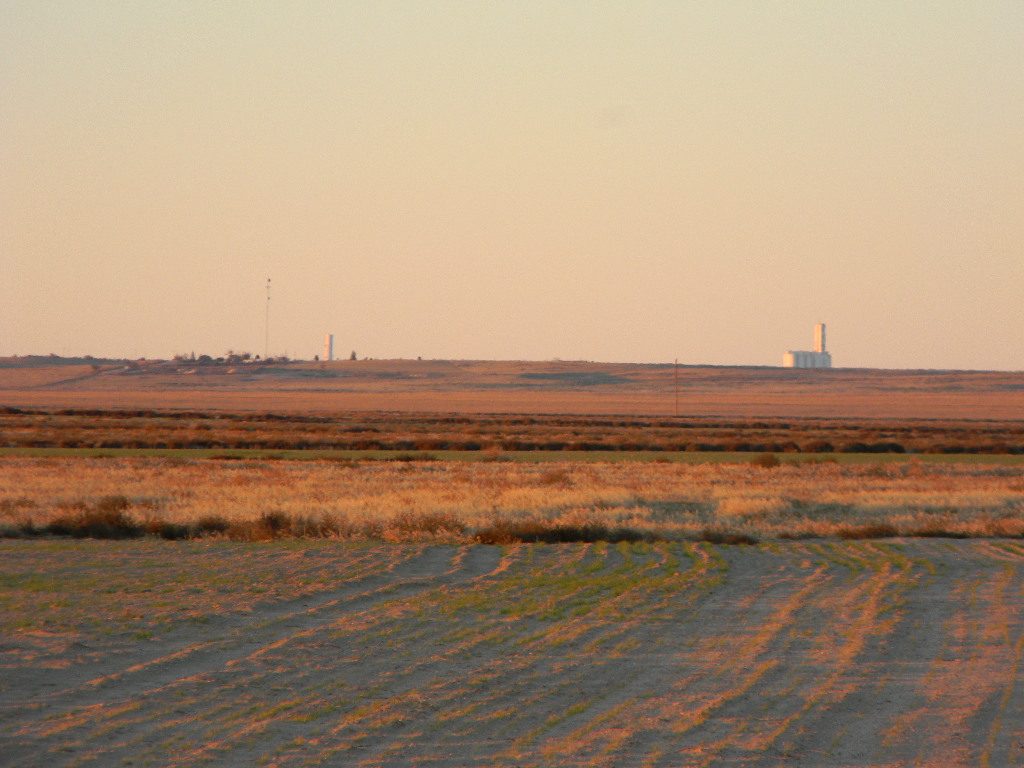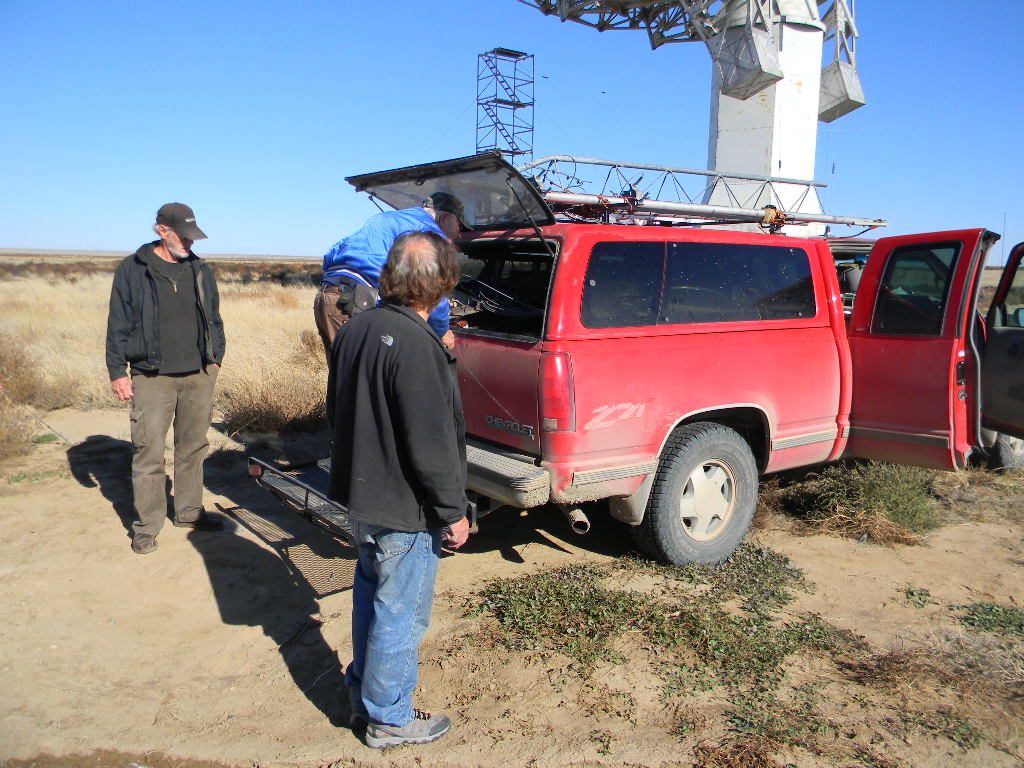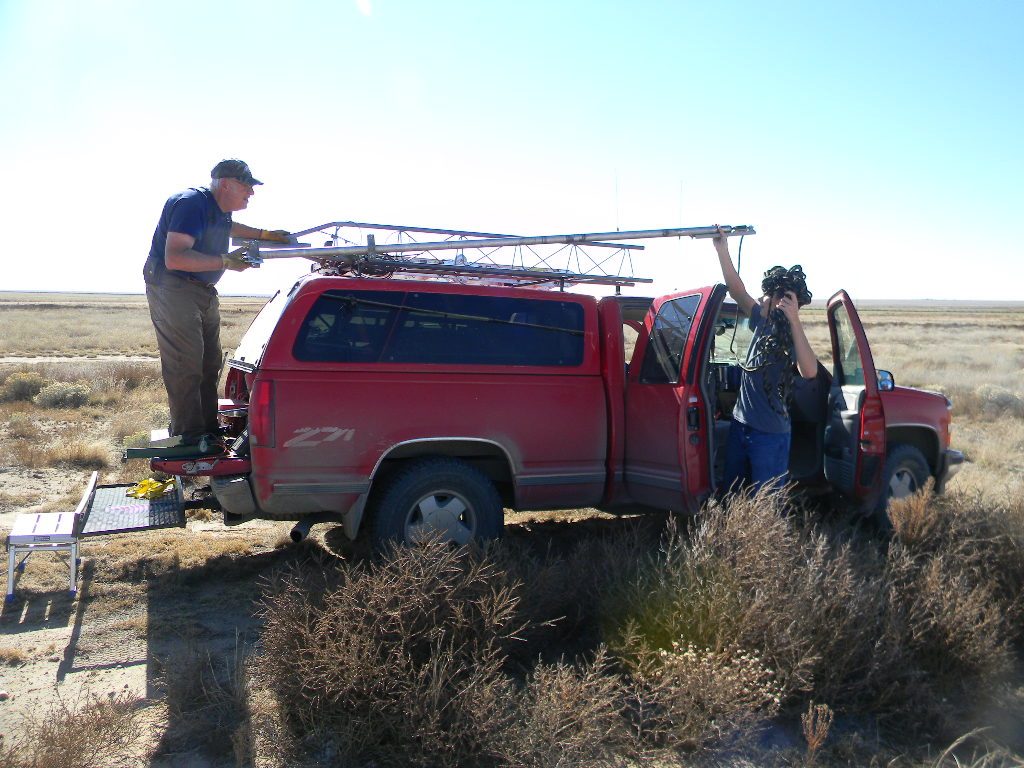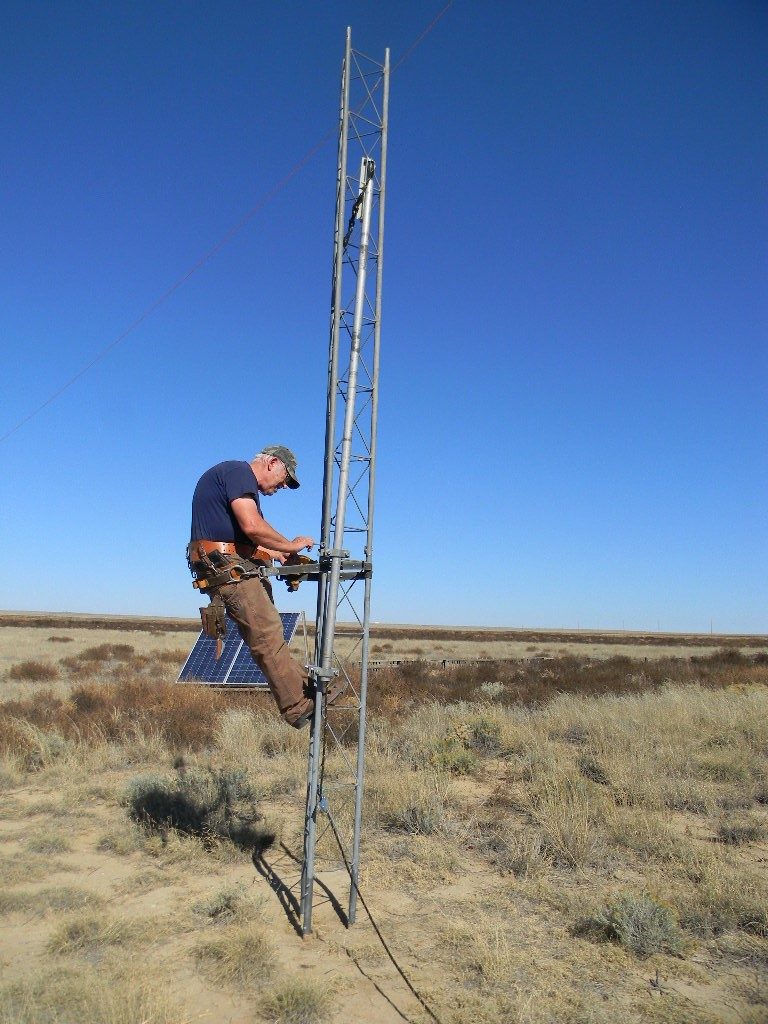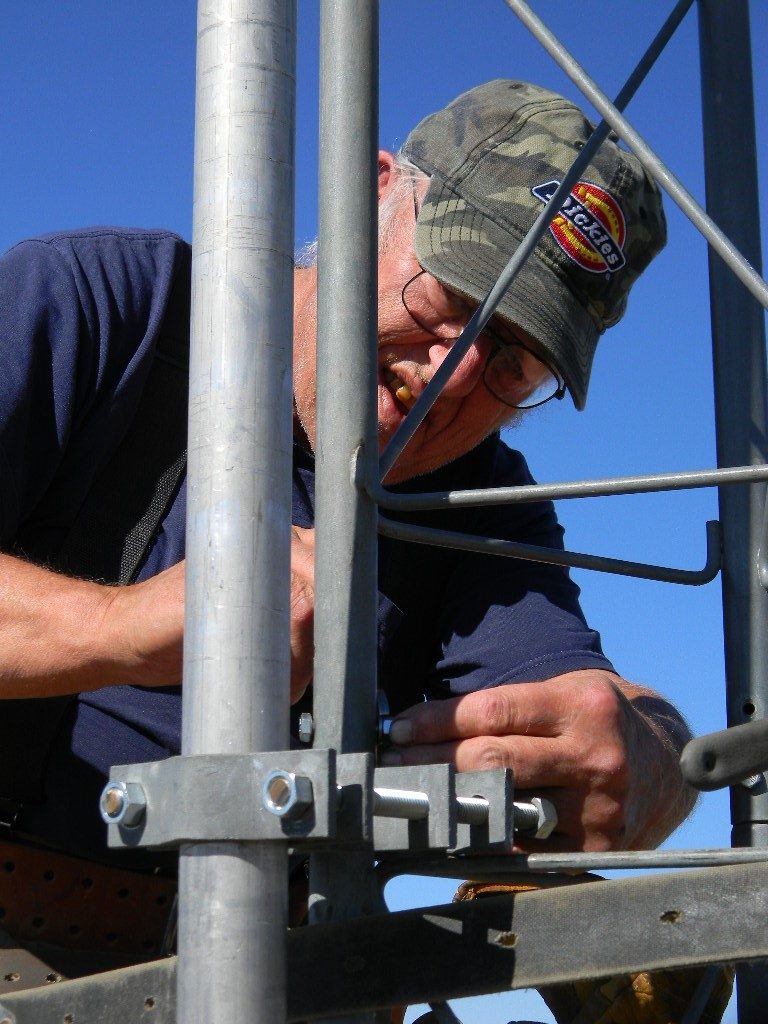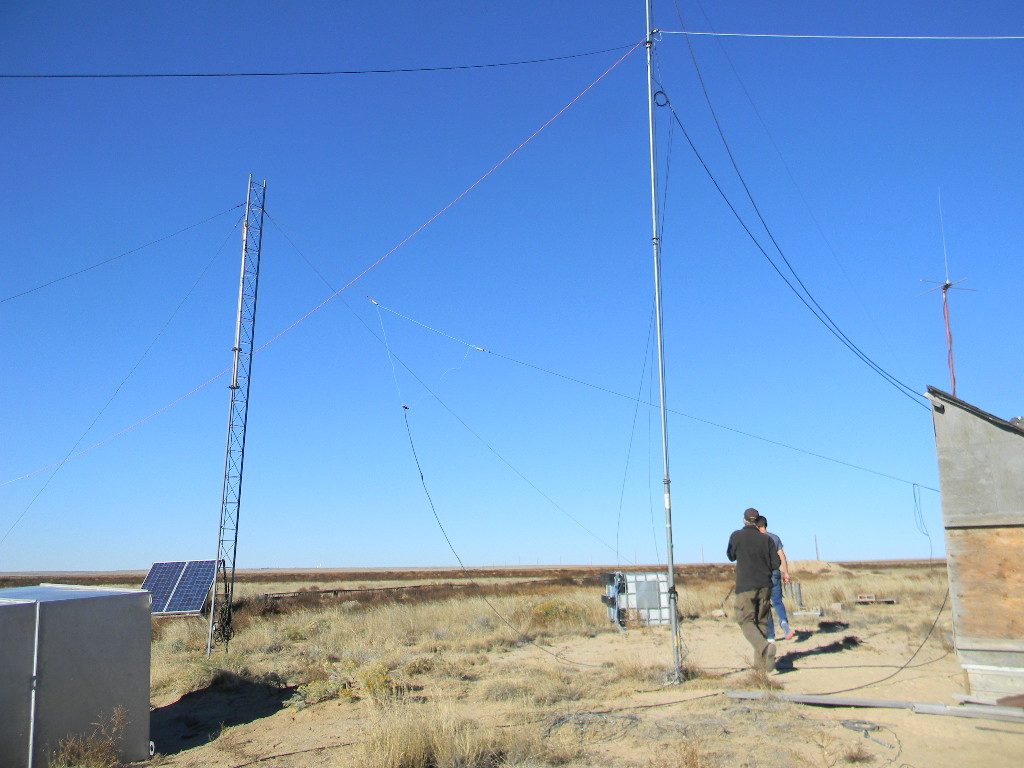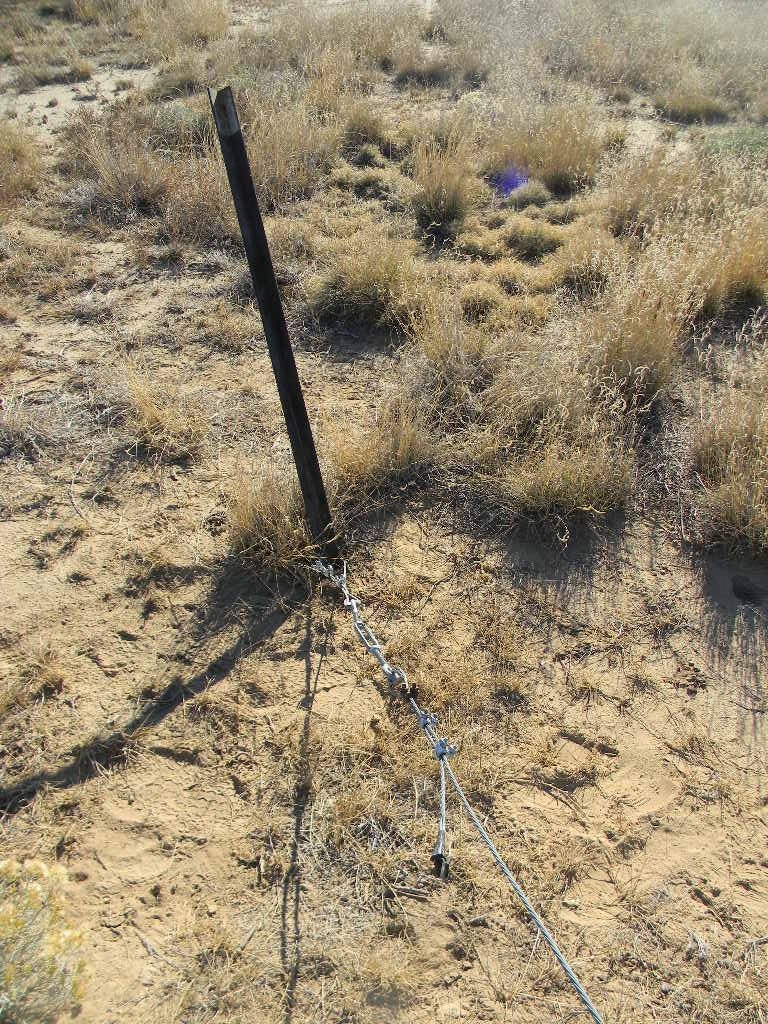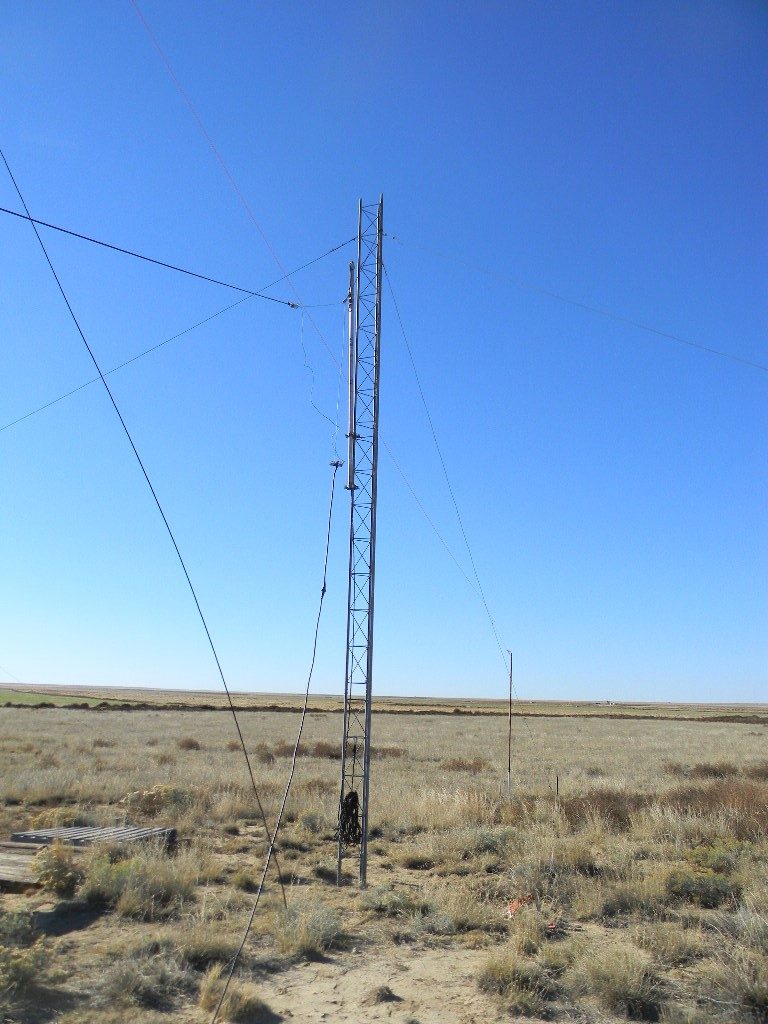Text and photos by Gary Agranat.
As we do each third weekend of the month, we had a scheduled work day at our DSES Plishner radio astronomy antenna site in Haswell, Colorado. Our members who participated on this weekend were Steve Plock, Ed Corn, Ray Uberecken, and Gary Agranat. Work objectives were:
- Completion of installing the antennas and cables on the new 50 foot ham radio antenna tower.
- Servicing the 60-foot dish antenna feed.
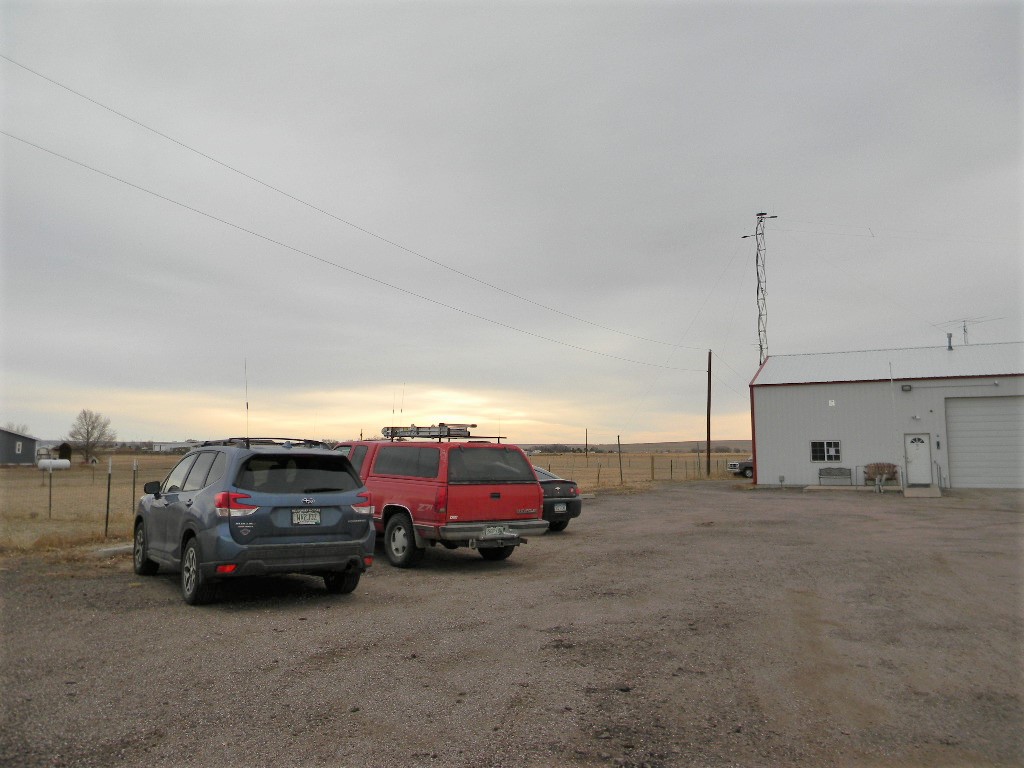
I will save discussion of the 60-foot antenna feed for the Engineering Meeting minutes. That work was done by Steve Plock and Ray Uberecken. In this post I will describe the work we completed for the 50 foot tower.
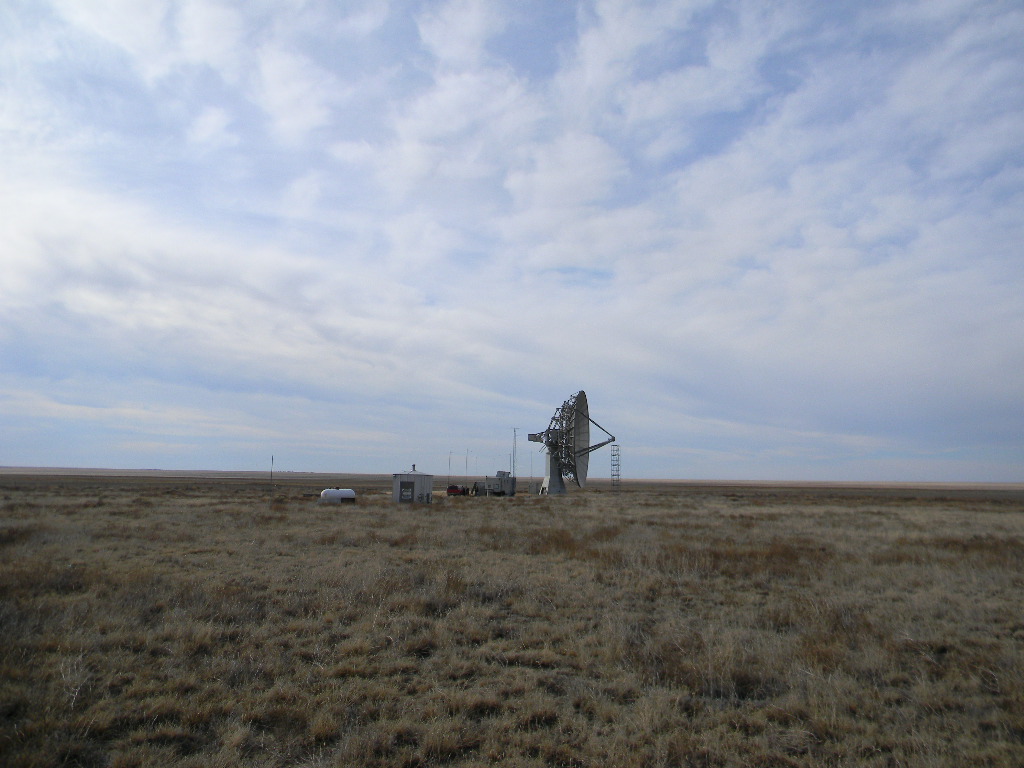
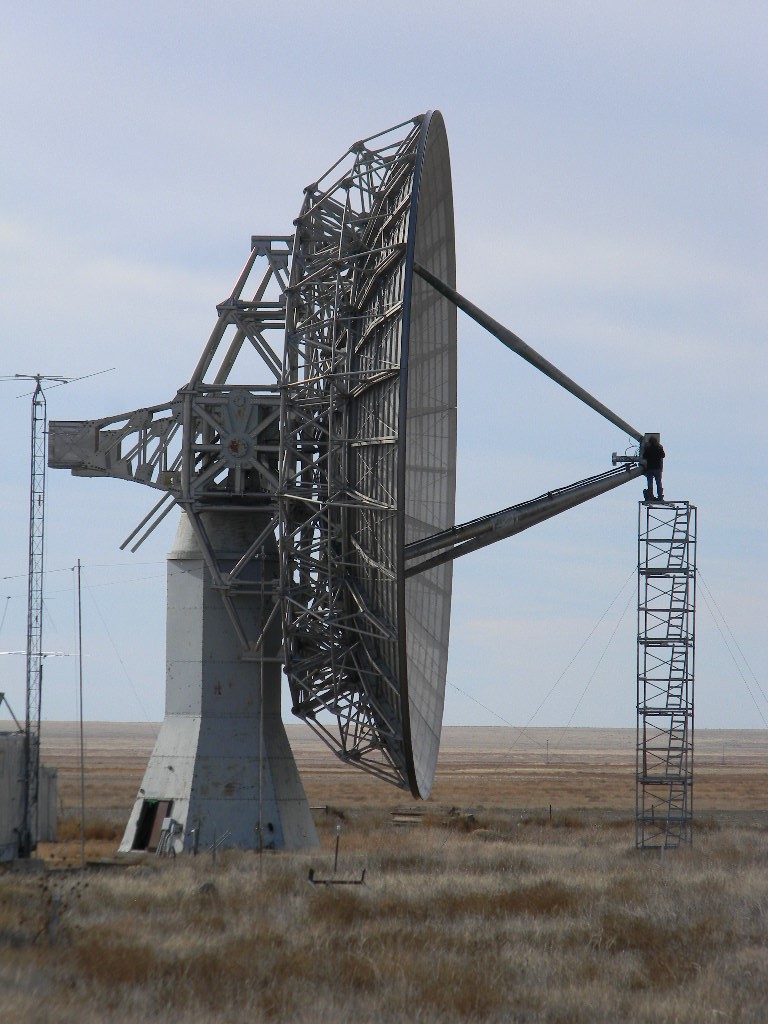

With the 60 foot dish antenna rotated to the service tower, Steve worked at the antenna feed.
For our 50-foot tower work, we installed a second vertical antenna for normal contacts on the 2-meter VHF band. This gives us a second 2-meter band capability, independent of our already existing 2-meter band talk-in radio. We then installed coax cables for both of the 2 meter band antennas on the tower.
We also serviced the 80 and 160 meter band dipole antennas that the tower supports: 1) We replaced some of the nylon rope that lifts the dipole antennas to their deployed positions. Previously we had connected shorter pieces of rope and knotted those together. But the knots stuck in the pulleys, and we therefore replaced those with longer sections of rope without knots. 2) We neatened the arrangement of the wire antennas supported by the tower.
Captions to the photos provide more detials of the work.
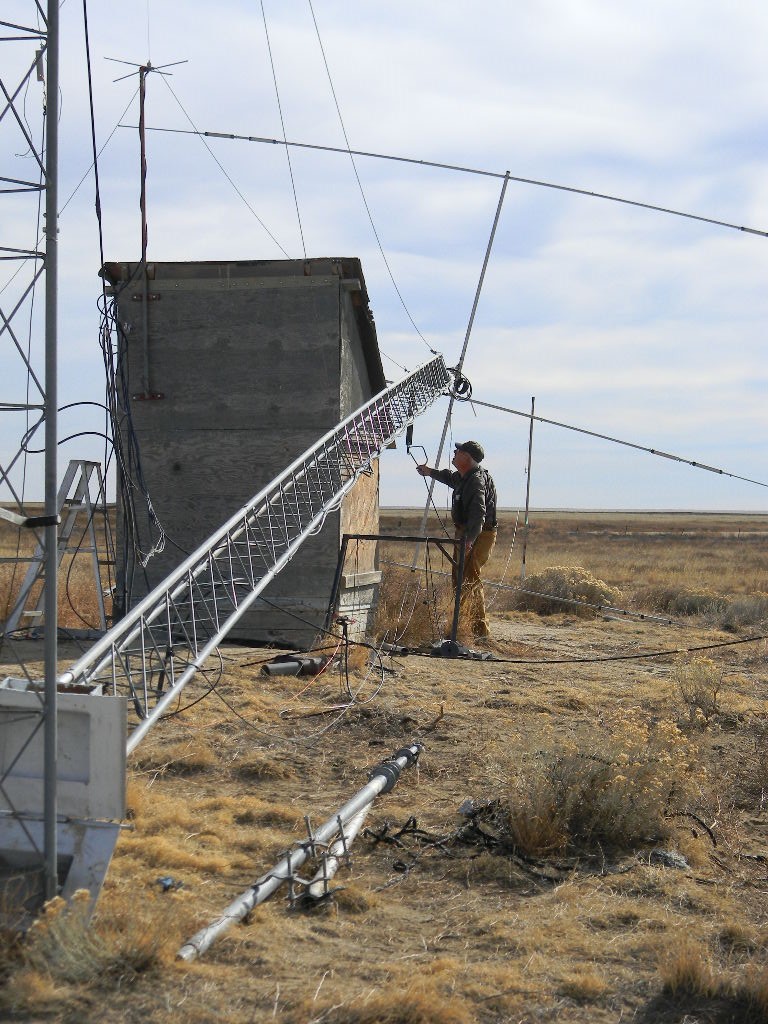
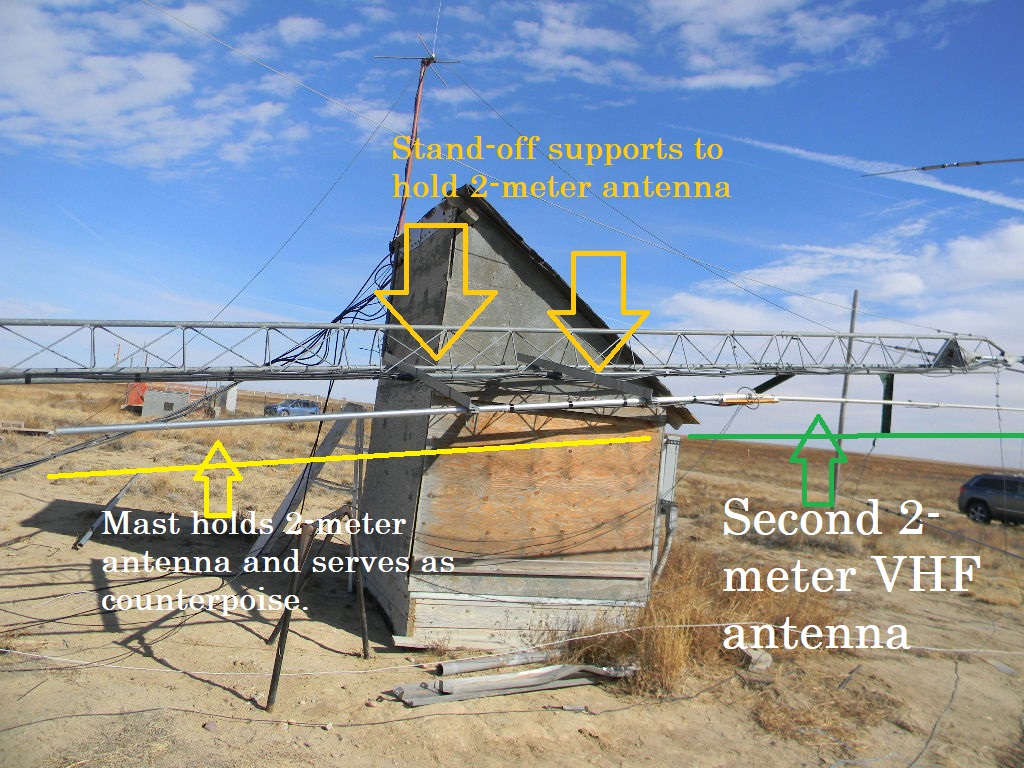
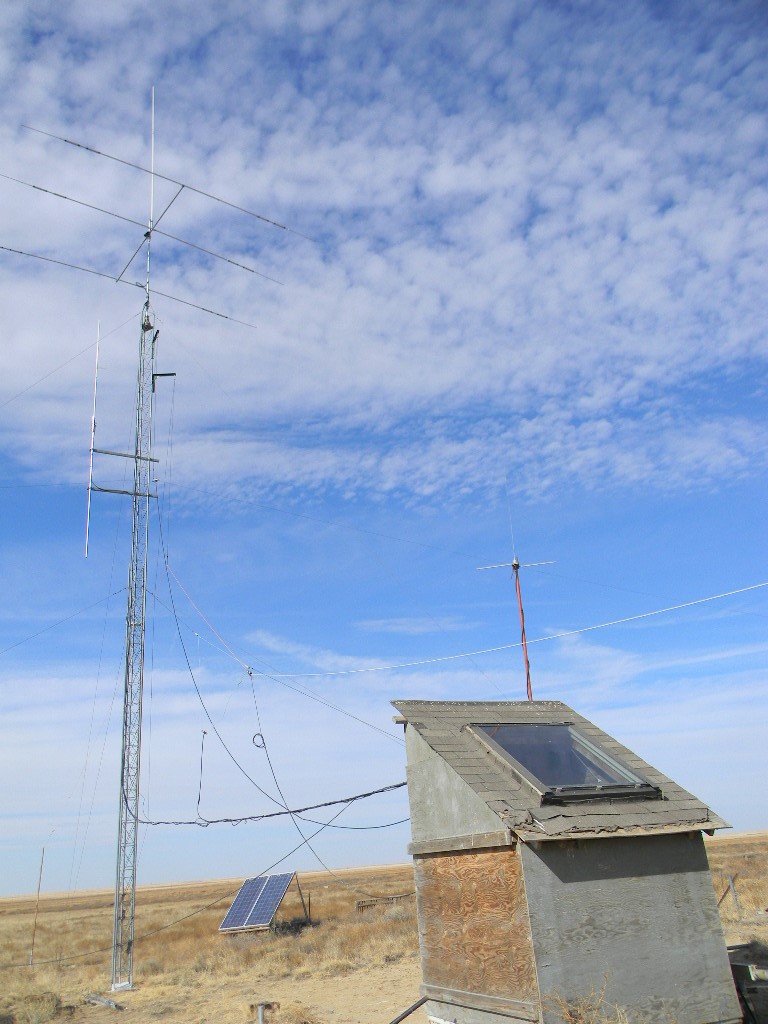


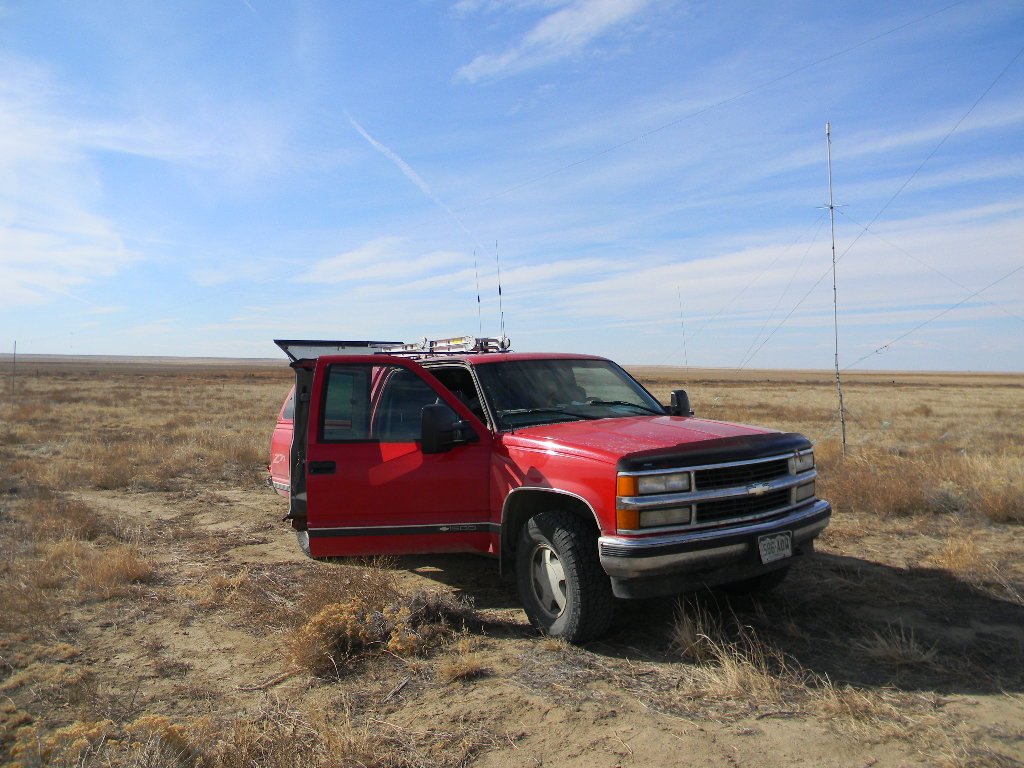
After we serviced the ham and radio astronomy antennas, Steve made us lunch by smoking beef sausage in the grill. That was served with coleslaw and potato salad. Gary also brewed coffee.
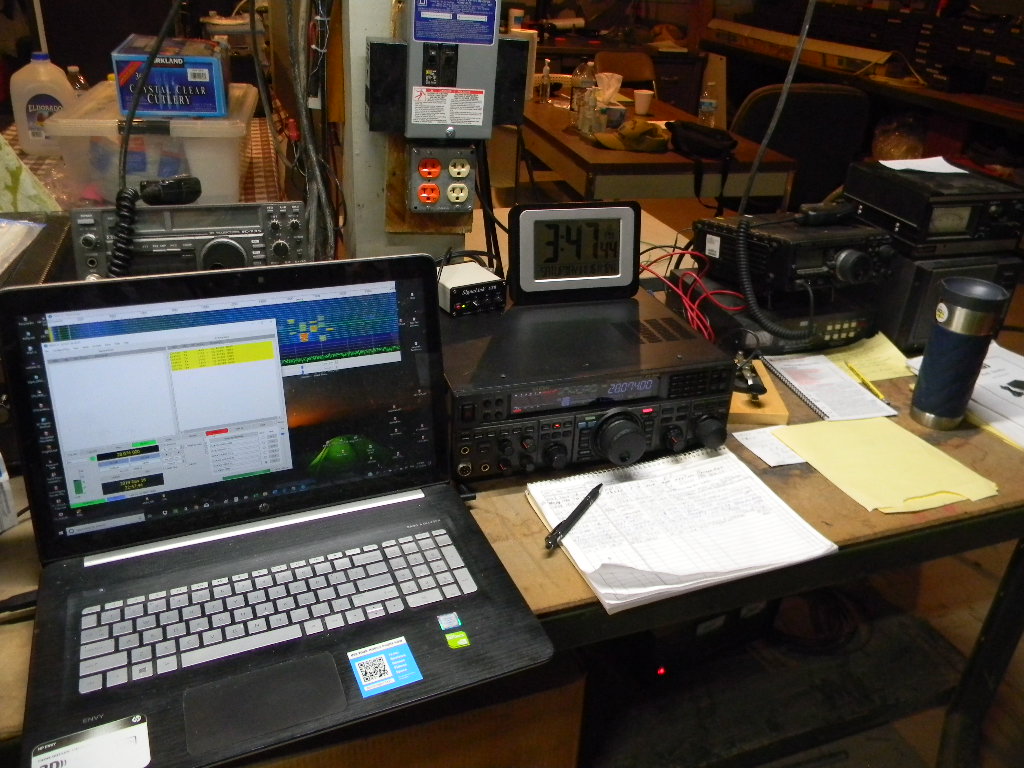
After lunch I did some ham radio operating using the tri-band Yagi, and also the using the 80 and 160 meter dipoles. With the tri-bander, I first made a phone contact to Hawaii on 15 meters, before the bands got busy with the ARRL sweepstakes. Then I operated FT8: on 15 meters I mostly contacted South American stations (lots of Brazil), plus some US stations when they were there (including North Carolina and Montana). On 20 meters the band opened across the Pacific. We had many calls to us from Japan. Perhaps they saw our profile on QRZ, or perhaps they noticed our rare grid square. Also across the Pacific, we made two contacts with South Korea, one with mainland China, one with Indonesia, and one with Australia. The band became weaker for US and Canadian contacts, but we did have some of those too. I alternated going to 80 meters, and had a few more domestic contacts there. These were with our K0PRT station callsign. Later I also used my callsign, on 20, 80, and 160 meters. 160 meters had noise at the FT8 frequencies. But I went to the upper portion of that section of the band, which was just slightly better. I managed 4 contacts on 160 meters, to as far away as Kentucky. I would say our antennas were working well.
Within a few days we received a number of e QSL confirmation cards.
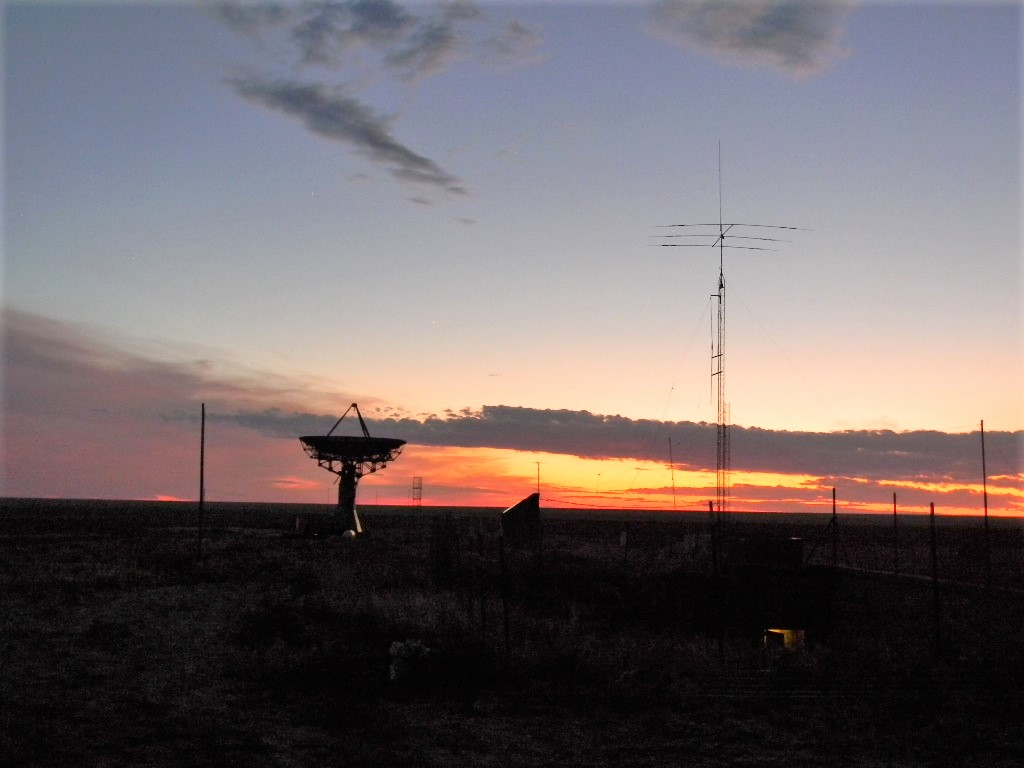
Ray left after lunch. Ed and Steve left before sunset. Steve tested the range of the new talk in radio antenna on the tower as he and Ed drove home away from the site. We had good contact to as far away as Sugar City. At JRs in Ordway, we could hear each other, but Steve needed to turn off his squelch. And at that point there were some slight dropouts. But we could still communicate. That is a great improvement for our talk-in system. Gary stayed and operated the ham station until a little after dark, and then closed up and departed too.
